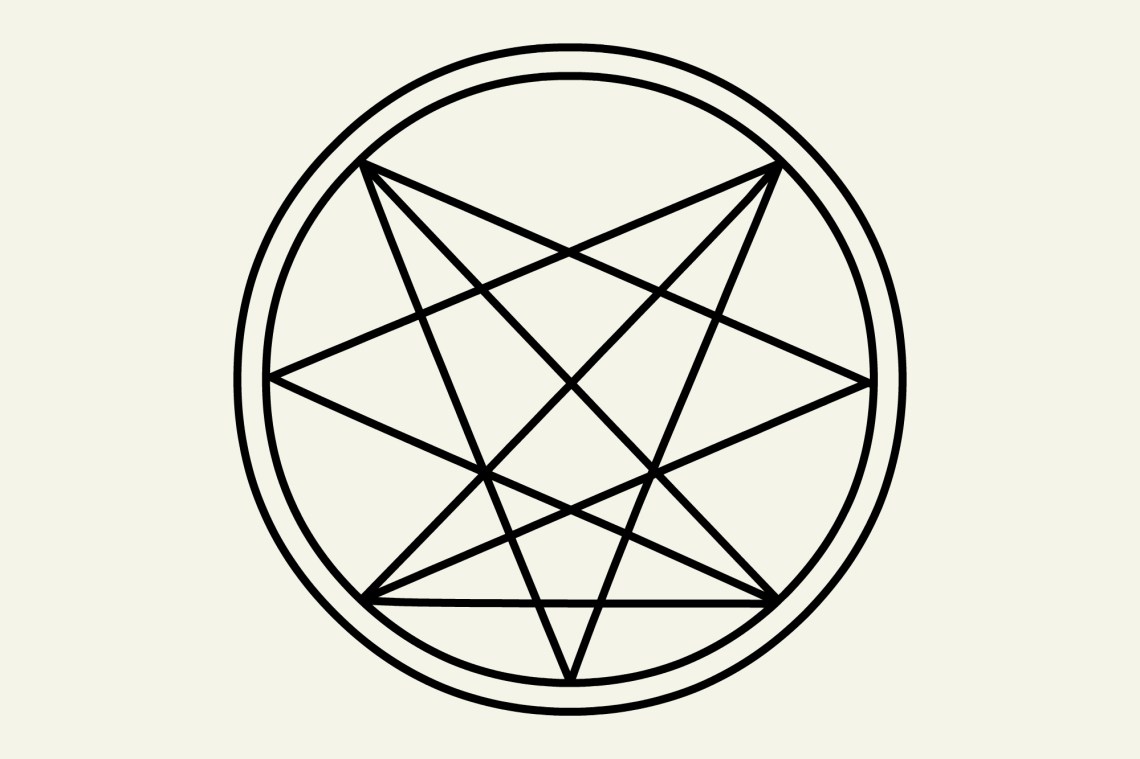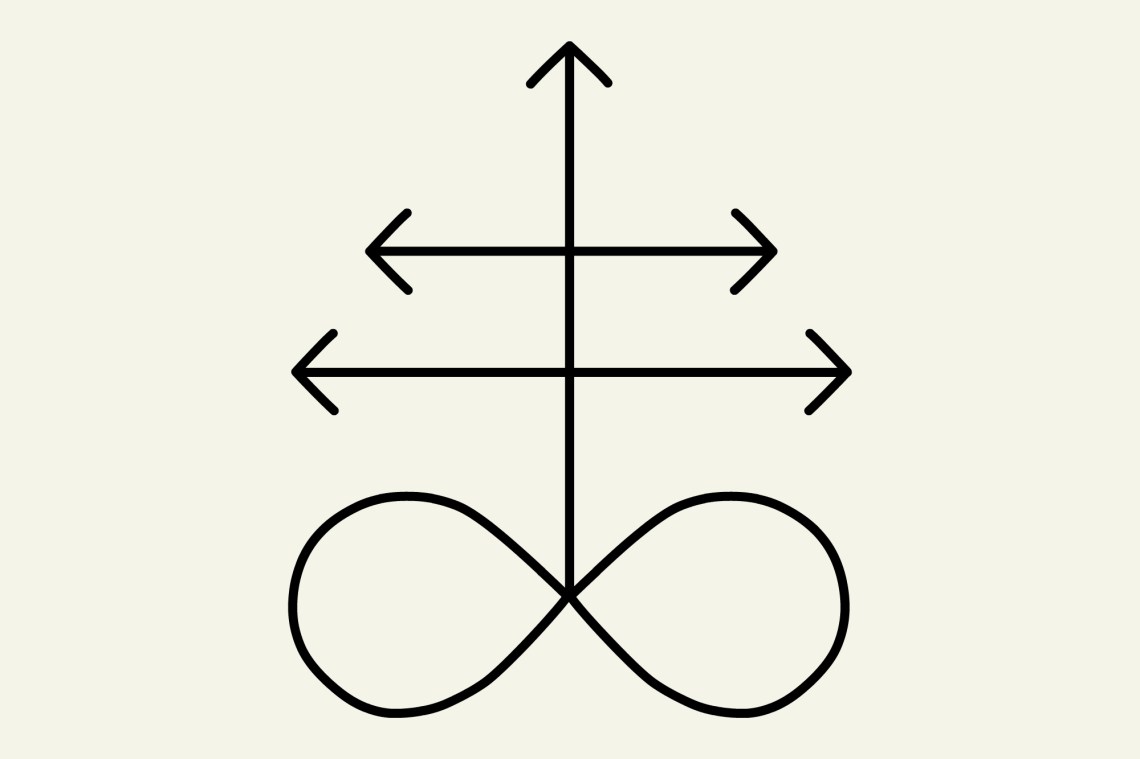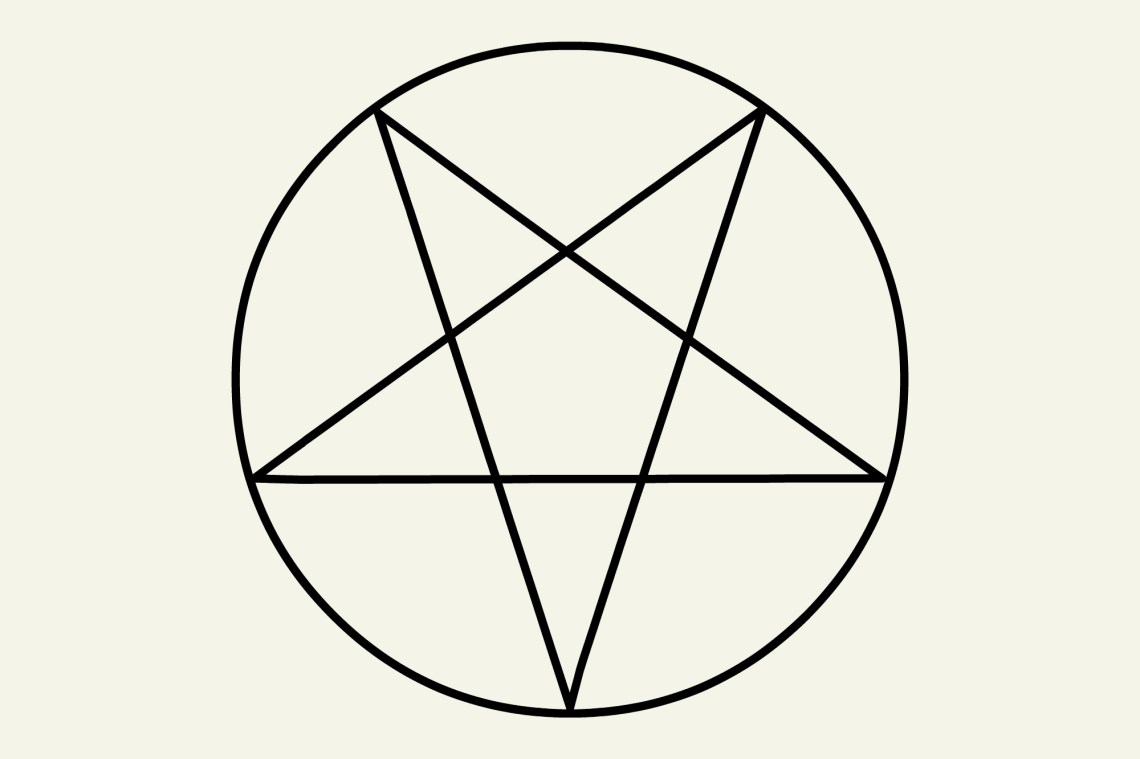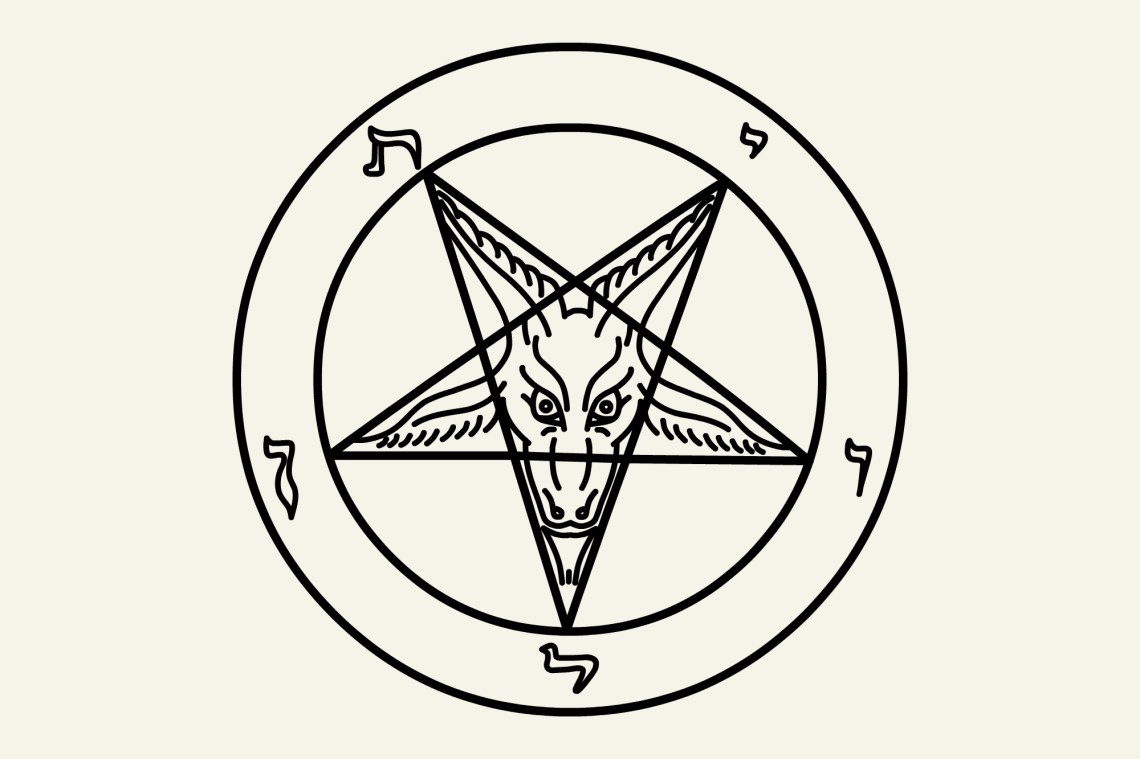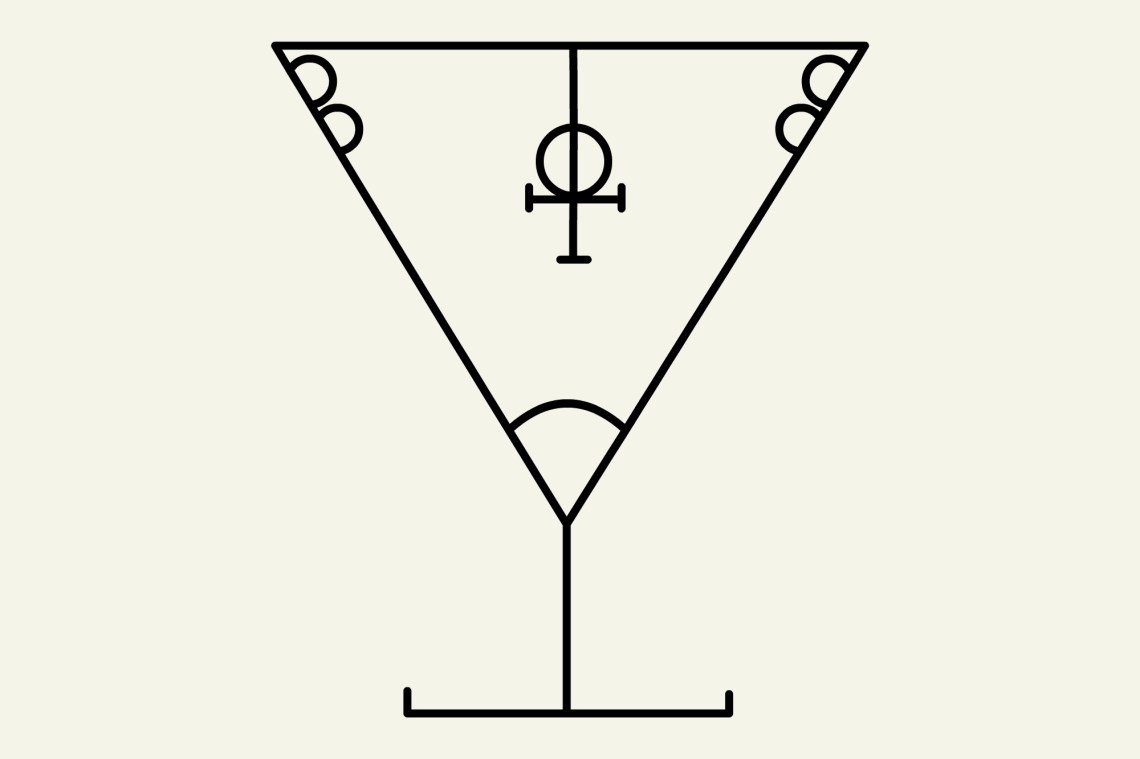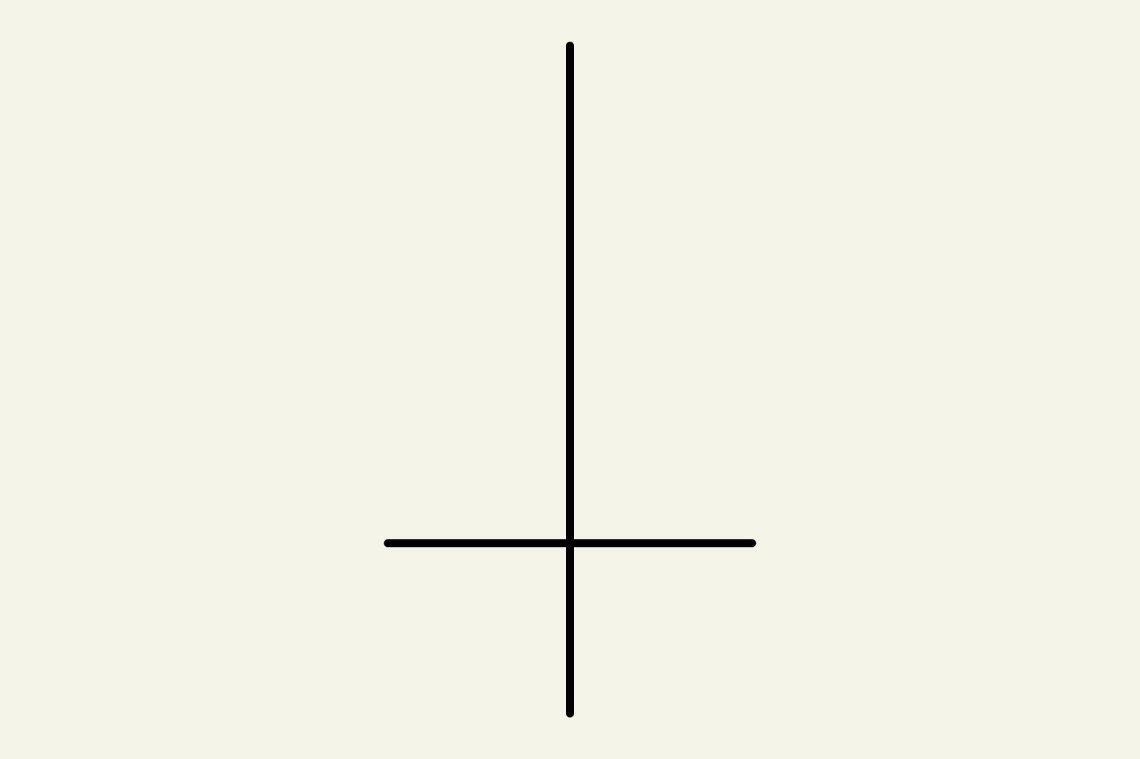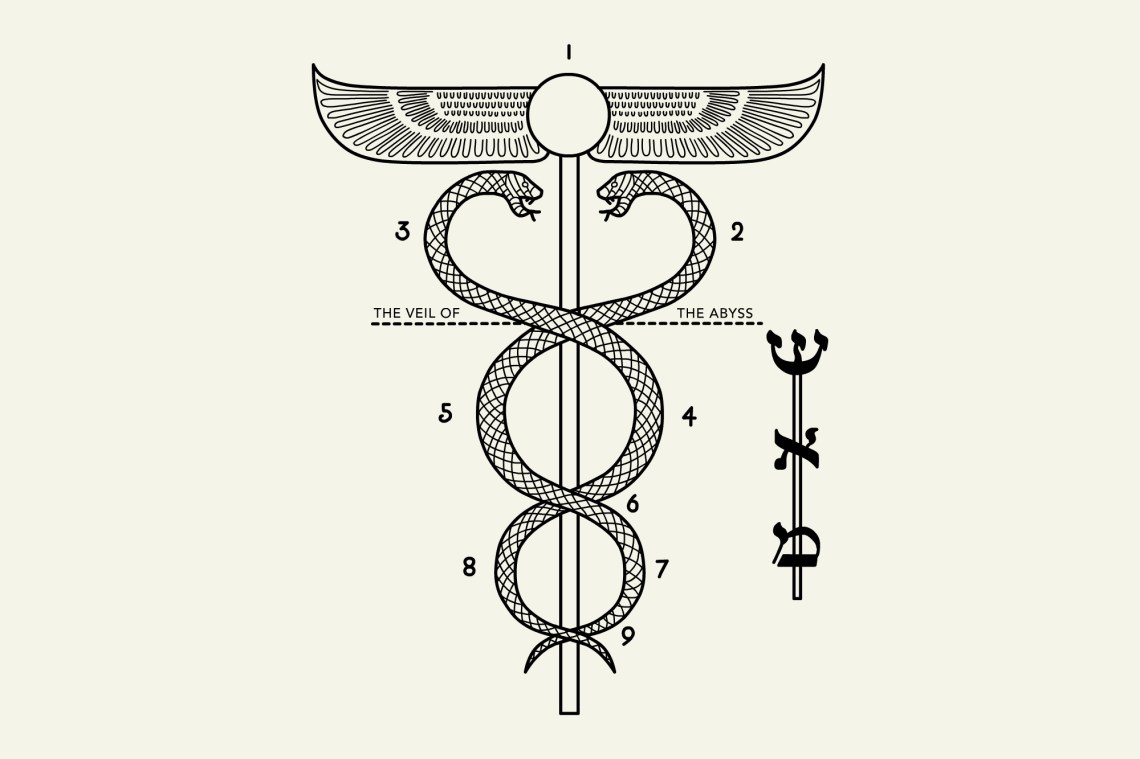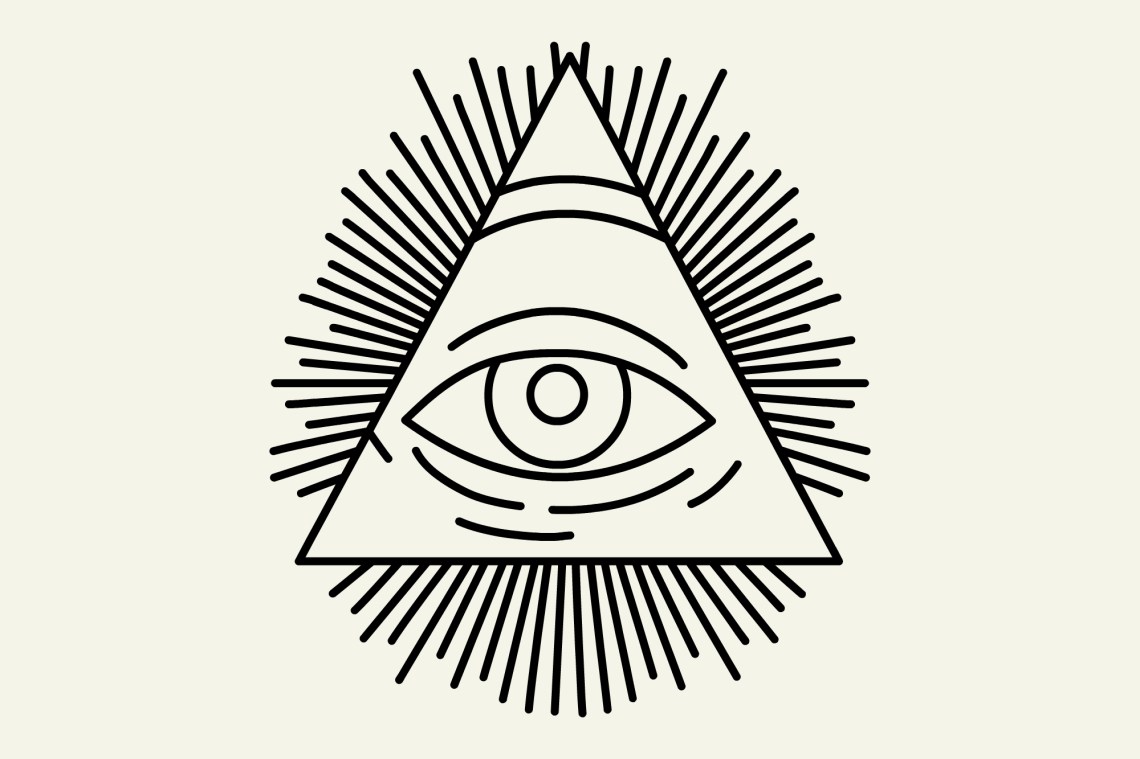
This article can also be found at The Hidden World of Symbols | The UFO Spotlight On…
Who Are the Illuminati: The Secret Societies, Symbols, Bloodlines and the New World Order (Unabridged)
Publisher Description
Hidden behind the veil of their secret society the group known as the Illuminati have still managed to garner great attention and acclaim. They have been blamed for everything imaginable such as being the igniting force behind the French Revolution and being the real masterminds behind the 9/11 attacks. They have even been credited with assassinating both Presidents Lincoln and Kennedy, because these two celebrated presidents made the unfortunate mistake of trying to usurp their unquestionable power.
The so called conspiracy theorists say that they are hell bent on ushering in their new world order which consists of the establishment of a one world government, a one world army and destroying the sovereignty of every nation. They are said to be implementing their New World Order through organizations they are identified with as being part of like The Bilderberg Group, The Council on Foreign Relations, The Trilateral Commission, The Club of Rome and many others. There are prominent families who are also said to be part of the Illuminati like the Rockefellers and the Rothschilds. But are these assertions valid? Does popular society have it right or have they simply misunderstood this secret group? Have they been given a bad rap?
In his revealing book entitled
Who Are the Illuminati: The Secret Societies, Symbols, Bloodlines and the New World Order author Frank White takes a critical look at this powerful underground secret society, who they are and what their intentions are in a world filled with scorn for them. He explores not only the true facts about the group, but also the urban legends attributed to them, some of which are true and others of which have been greatly exaggerated. For example, do they really control the world and everyone else are just slaves to their whims and madness? Do they have a stranglehold on the entertainment and music industries and are the popular stars just puppets carrying out their agenda to the masses? Did they really order the murder of pop superstar Michael Jackson? These questions and many more will be answered in this explosive book.
Darkness
Darkness is a symbol of evil or mystery or fear. The darkness is almost a monster waiting to swallow you whole. It is the absence of light. Scientifically it is only possible to have a reduced amount of light. The emotional response to an absence of light has inspired metaphor in literature, symbolism in art, and emphasis. The story of the Light versus the Darkness is one that everyone thinks that they know. The Light is good and the Dark is bad. However, this is too broad of a generalization, for not all of those who follow the Light can be considered to be “good,” and many good people do indeed follow the Dark—you may even know a few yourself.
Underneath all of the issues the Light and the Dark are very simple. It simply has to do with one’s personal point of view. A person who sees the world as a bad place, who sees nothing good anywhere he or she turns, and who thinks that there is no hope of anything better is someone who has a “dark” mind. These people are not necessarily followers of the Dark, but they ARE the basis of that particular orientation. On the other hand, a person who has a positive outlook on life, who tries to find the good in everything, and who often tries to point out that the world is not as bad as people think is a person who is of the Light. Neither one of these ways of thinking is necessarily right or wrong, and both can make good arguments for their own point of view, which is where, ultimately, the problem lies.
Over the years, all of the wars and conflicts that have taken place for anything other than land disputes have been somehow in the form of Light against Dark (in the universe of Firefly Cross, not necessarily always true in our own history). People who had extreme opinions on either side would spark up problems. Once the problems had begun, other people who would normally have been more in the middle, would choose one side or the other based on their opinions at that time, and wars would develop. This is how the whole problem began. The designations of “Light” and “Dark” began to be used to differentiate between the two sides, for “good and evil” were not appropriate since neither side was good and neither side was evil. For it is true that too much light can do as much or more harm than too much darkness, and wherever you find one, the other must surely exist. They are exact opposites, but there will never be one without the other, they must balance each other.
As a quick explination of these two sides as they related to the different conflicts that arose:
Dark: Followers of the Dark with be those with very pessimistic attitudes. They find fault with everything in the world, and humans are one of the greatest sources of those faults. They like to use creatures that aren’t human and can be easily controlled, giving anyone too much freedom is a recipe for disaster in their eyes. The negative aspect of the Dark’s view is that nothing positive can ever come from it, there are always more and more problems to solve, the world is never a good enough place for them. A leader of the Dark may try to conquer the world in order to force his view on how things should be done upon the people, in other words conquer in the name of an idea. (Such as Hitler and the Nazis attempted—there were many people who saw them as heros, and as the Christians acted in the Crusades.)
After Fate took control of these conflicts, they started to be more organized and simple. With the power that Fate had given to each side, there were fewer people just “in the middle.” Everyone chose one side or another to be behind this power. There were fewer “innocents” in the struggles. As the power on each side began to grow, creatures of magic began to appear that were created by and would supplement the power of each side. For the Light, the creatures that were created included the likes of unicorns, nymphs, and dryads. Darklings were creatures such as vampires and werewolves. After a time, it became possible to gauge the power of the Light and the Dark based on how many of these creatures existed.
It so happened that after Fate took over, the Light began to win almost every battle against the Dark. This was due mainly to the Dark’s negative outlook, they were constantly underestimating the Light, while the Light’s positive outlook gave them confidence in every battle. This is when the concepts of Dark and Light as evil and good began to emerge. People thought that the “good” would always triumph. Even so, this angered the agents of the Dark, and eventually pushed them to take actions which concluded with the control of the battle outside of Fate’s total control. (see the page on the history in order to get this in more detail. This is where the two pages begin to cross information.)
Once Fate began to lose control, everything began to change. All the centuries of control after the initial chaos broke down, and the conflicts became more chaotic than they had ever been. Since Fate’s control still had some influence over the Dark, she was able to hold them together fairly well, but the Light began to fall apart, and when a foolish keeper was chosen, the Light was finally defeated…and it was to remain defeated from that day on.
In the present time of Firefly Cross, the Dark has ruled from more than a thousand years, and their power has only grown in all that time. The people of this world are very cynical, and cannot seem to see the good in anything. The Light has become nearly non-existent. All of the creatures of the Light, Unicorns and such, have long since gone extinct, and all that remains of the Light’s power is Chaerius (the dragon), Ra’yl (the guardian), and the sword, Ra’grathon. Fate has charged these few and their new keeper with an important task. Their role is not to be victorious, for the Light does not have enough power for that to be possible, but they are to try to bring the conflict back under Fate’s control. They are to stop the Dark and reduce their power to that of the Light, so that it all may begin again.
*****

Secret Society Symbols
Secret societies were and still are popular around the world. From the ancient Greeks to the Freemasons, secret societies have become a part of history and have influenced politicians and presidents. Most secret societies have symbols that are only known to their members. Here is a list of some secret society symbols.

Elk Symbol
Symbol of pride, guardianship, stamina, and strength
Elk symbolism comes from Native Americans. It was believed that the elk protected women and would lead them home if they were captured by enemies. Elks were symbols of bravery and were used as a symbol for the warrior’s societies. The Benevolent and Protective Order of the Elks is a secret society that was founded in 1868. It was originally a social club in New York City. The society originally was only composed of white men and only later admitted people of colour and women. The Benevolent and Protective Order of the Elks helps many charities, youth programs, and veterans. Its symbol is an elk superimposed on the face of a clock that reads 11:00. There is a red star above the elk. The eleven o’clock significance goes back to one of the founding members, Charles Richardson. He was born and raised in England and then moved to New York City. In England, people would raise their glasses at 11:00 as a remembrance of the Battle of Hastings in 1066. After the battle, a curfew was put into place that started at 11:00. The 11th hour also suggests the eve of battle. It is also the Hour of Recollection and members of the club who have died are remembered at that time. While a red star signifies communism, communists were barred from the group. The star represents unity and the elk represents pride, strength, and guardianship.

Because people of colour were not admitted into the original Elk society, the Improved Benevolent and Protective Order of the Elks of the World was formed in 1897. Their symbol is an elk running on the globe. This symbolizes protection, stamina, and guardianship throughout the world. This organization was founded by B.F. Howard and Arthur J. Riggs. They wanted to form a branch of the Elk’s society but were denied because they were people of colour. They formed their own society instead and it is still active today. They have 500,00 members in 1500 lodges worldwide. This order also helps charities, youth programs, and veterans. They provide spiritual and financial support to their communities. Members wear a ring with an Elk on it. Above the Elk is a five-pointed star surrounded by Roman numerals similar to a clock face. The letters BPOE appear under the Elk. The star symbol represents excellence and divine protection and guidance.
Skull and Bones Symbol
Symbol of death. The Skull and Bones secret society is found at Yale University. It was founded after a dispute between some debate societies at Yale. Its symbol is a skull and bones with the number 322 underneath. The skull symbolizes death and the number 322 symbolizes the death of the Greek orator Demosthenes. When he died Athens became a plutocracy and only rich people were considered citizens. Another name for the Skull and Bones is the Brotherhood of Death. The society was founded in 1832. The Skull and Bones meeting place is called the Tomb. The members are called Bonesmen and they are picked from the elite of Yale University. Until the 1970s the membership was white Protestant males with occasional males of other faiths or races. Females were finally permitted to join in 1992. The society has been known to steal from other societies and keeps its treasures, including human skulls, in the Tombs. Presidents and business people have been members of this secret society.

White Lotus Symbol
Symbol of mental purity, spiritual perfection, rebellion
The White Lotus Society was a secret society founded in AD 402 in China by a monk named Master Huiyuan and a group of like-minded monks. The group was named after a large lotus pond built by Master Huiyan. They observed the Buddhist’s five rules of discipline, they worshiped the Amitabha Buddha and illustrated the teachings through pictures and drawings. The White Lotus Society also encouraged men and women to intermingle which was not done during those times. Later the society took on a millenarian aspect when the members started to believe that the Buddha would return to the Earth and bring mankind salvation. They brought about the destruction of the Yuan Dynasty. The following Yuan government banished the society. Over the next decades, secret societies were made illegal and then legal again. The White Lotus Rebellion which lasted from 1796 – 1804, was brought about by the White Lotus Society. The Qing government quashed the rebellion but not before the members diminished the wealth of the Qing government and weakened its power. Up until 1912 people associated with the White Lotus Society could be served and processed.

Green Ribbon Symbol
Symbol of agriculture, activism
The Ribbon Society was a secret society formed by poor Catholics in Ireland. They formed in contrast to the Protestant Orange Order which was founded to oppose Catholicism. The Ribbon Society called its members Ribbonmen. They were formed to help poor farmers and tenant workers in 19th century Ireland. They were active from 1835-1855. During that time, the landlords of the farms would just kick farmers and tenants out of their houses. They raised taxes beyond what people were able to pay. The Ribbon Society members would attack the process and tithe servers. The Ribbonmen and Orange men clashed in a number of confrontations ending in some deaths. The Ribbonmen wore a green ribbon in their lapel as a symbol of their membership in the society. Green is the colour of Ireland and agriculture. It is symbolic of the earth and activism. The Ribbon Society met in lodges in secret to plan and organize the tenants and farmers in rebellion. They helped establish the policy of Tenant’s Rights.

Crocodile Symbol
Symbol of power, death, and rebirth. The Neegee Crocodile Society in West Africa is a cannibalistic secret society. They are mostly located in Libya and have been there since the 1800s. The Negee Crocodile Society takes people and eats them to appease the crocodile god and gain power. They believe that eating a person gives them magical powers to help them transform into crocodiles. This group is called the Crocodile Society because their members usually live near water. The members dive underwater with the help of a gourd and wax in their nostrils, and knock over canoes or take people from the edge of the water and drag them underneath the water as a crocodile does to its prey. After killing them, the members imbibe on the person’s flesh. To become a member of this society, a person must sacrifice a family member. This society was believed to still be active in the mid-2000s.
Red Spear Symbol
Symbol of protection, anti-government.
The Red Spear Society was founded in the 1920s in Northern China. This society challenged government control in Northern China. Buddhist monks usually led the Red Spear Society and they carried red spears into battle. The red symbolized protection against disaster. The Red Spear Society was formed to help protect tenants from warlords, bandits, tax collectors, Japanese, and Chinese communists. From 1928-1929 the Red Spear Society rose up against Liu Zhennian, the Nationalist warlord ruler. Liu raised taxes and his army brutalized the tenants. The Red Spear Society rose up to protest the way the tenants were being treated. While they won some skirmishes and managed to set up their own proto-state, the rebellion was eventually crushed by Liu. It was believed that over 3 million people participated in the Red Spear Society.
Yellow Sand Symbol
Symbol of protection and anti-government.
The Yellow Sand Society was a secret society founded in China in the early 1900s. The Yellow Sand Society was a millennial group that believed the only members of the Yellow Sand Society would be spared in the upcoming armageddon around 1919. They were against government intrusion and increasing taxation. They were involved in many uprisings but were usually crushed. When the People’s Republic of China was formed, they outlawed secret societies, but there were still active members of the Yellow Sand Society into the 1980s. The Yellow Sand Society wanted to restore the idyllic Ming Dynasty. They believed through magic, that they were immune to gunfire. They carried a yellow flag during uprisings. The Yellow Sand Society wanted a reign of happiness and justice for all people.
Rosy Cross Symbol
Symbol of consciousness, education, knowledge.
The Rosicrucians were a secret society formed in Europe in the early 17th century. They believed in a universal reformation of mankind. Their main symbol was a rosy cross symbol. This was a calvary cross with a rose in the middle. This symbol first appeared in Byzantine and was adopted by the group. Some people believed that the cross was a representation of the human body and the rose symbolized the opening of the consciousness. Christian Rosenkrutz formed a small circle of friends in 1407 who agreed to help the sick without receiving payment and maintain a secret fellowship. This was the foundation of the Rosicrucians. Manifestos were written by Rosicrucians about astrology, philosophy, and alchemy. These manifestos helped promote and expand the group throughout Europe. The Rosicrucians were the foundation for many other secret societies later in Europe, some of which are still active today.

Square and Compass Symbol
Symbol of morality.
The Freemason Society was established in the 14th century by local stonemasons. They have different degree levels that include: Apprentice, Journeyman/Fellowcraft, and Master Mason. As they progress through these levels they learn new information about the Freemasons and are trusted with different responsibilities. The Freemasons meet in private lodges where they bestow degrees on their members and listen to lectures about Masonic history. They are guarded by an armed swordsman at the door who is there to keep non-members out of the lodge. The Freemasons’ main symbol is the square and compass symbol. The square symbolizes squaring their actions by a square of virtue to all mankind. The compass symbolized how to conduct yourself within certain boundaries. Put together, the square and compass symbol symbolizes wisely conducting actions within boundaries. The Freemasons support charitable causes that contribute to health, education, and old age. The Freemasons are sworn to secrecy about their society and symbols.

Hatchet Symbol
Symbol of survival, power.
The Carbonari were a secret society in Italy. Their name means charcoal burners and they were founded by charcoal burners in the 18th century. They called their meeting place a baracca which is a hut. The interior of the baracca was called the vendita which is a coal-burning term meaning the place for selling coal. The members were called good cousins and non-members were called heathens. The members consisted of apprentices and masters. The masters wore a small hatchet signifying their rank and were bound to secrecy about the Carbonari. They organized to establish a constitutional government and defeat tyranny. They also defended the common people against tyranny. They rose against King Ferdinand I in Italy in 1820. Because of this uprising King Ferdinand I agreed to a new constitution. The rebellion was beaten down and the Pope excommunicated members of the Carbonari. In 1831 they rose up again in support of Duke Francis IV of Modena. The leader of this uprising was arrested and condemned to death before the uprising could take place. The Carbonari continued until 1848. They were an influence to other secret societies that arose afterward in Italy.
Double Leaf Symbol
Symbol of growth.
The Double Leaf Society was founded in Japan in the 1920s. It was a secret military society composed of majors and colonels who had graduated from the Imperial Japanese Army Academy. They wanted to oust Choshu elements from the Imperial Army who held higher ranks. Because the Coshu had been given these ranks, the members of the Double Leaf Society were less likely to be granted higher leadership roles. The Double Leaf Society also hoped to prepare the Army system for national mobilization. The members of the Double Leaf Society ended up merging with another secret military society.
Black Dragon Symbol
Symbol of nationalism, vengeance.
The Black Dragon Society was a secret nationalistic military society in Japan founded in 1901 by martial artist Uchida Ryohei. Their goal was to keep the Russian Empire out of East Asia. Its members included high ranking military officials, Cabinet members, and secret agents. They were in charge of an espionage training school that trained spies to spy on Russia. The members of the Black Dragon Society were active in the Russo-Japanese war as spies and assassins. They also waged a successful psychological war against the Russians. The Black Dragon Society formed alliances with different Buddhist sects. In 1946 the Black Dragon Society was disbanded.

Owl Symbol
Symbol of knowledge.
The Bavarian Illuminati was a secret society that was founded by Adam Weishaupt in Germany. The society lasted from 1776-1785 although some people believe it is still around today. The Illuminati believed in Enlightenment ideals. Weishaupt wanted to promote those ideals throughout the German elite. He hoped that the new members would be well versed in philanthropy, reason, and other more secular values so they could spread their influence in politics. Members of the Illuminati would infiltrate other secret societies, such as the Freemasons, in order to recruit people to their society. The members of the Illuminati wanted to infiltrate and overturn the monarchical rule. Eventually, the Illuminati hoped to take over the world. They used many bizarre means to keep their identities secret including spy-like protocols. One of the Illuminati’s symbols was an owl on top of a book encircled by laurel leaves. These symbols together mean the victory of knowledge over religion. The Illuminati was disbanded in 1785 when Karl Theodor, the Duke of Bavaria outlawed secret societies. After they disbanded their myth still lives on. They were accused of infiltrating the Freemasons and were accused of being behind the French Revolution. George Washington mentioned the Illuminati in a letter that kept the society and secrets alive in America.

Horse rider Symbol
Symbol of wealth, sportsmanship.
The Bullingdon Club was established in 1780 at Oxford University. It was started as a sporting club that was dedicated to horse-racing and cricket. Members of the Bullingdon Club are known for extravagant meals and destruction. Their uniforms are expensive and tailored. The president of the club is referred to as the General. He presents the winner’s cup at an annual horse race. The symbol for the Bullingdon Club is a rider on horseback playing cricket with a flag and the letters BC included. The horseback rider symbolizes wealth and power. Members of the Bullingdon Club have gone on to be prominent politicians and members of society.
Red Cross Symbol
Symbol of charity and martyrdom.
The Knights Templar were a secret society dedicated to helping Christians on their pilgrimage to the Holy Land. They were active during the Crusades. Members of the Knights Templar pledged obedience, poverty, and chastity. They abstained from alcohol, swearing, and gambling. They formed a bank with pilgrim’s money and loaned money to kings. Their symbol was a red cross which is a symbol of charity and martyrdom. The three ranks of Knights Templar included the noble knights, the non-nobel sergeants, and chaplains. In order to join the rank of knights, members had to have already been knighted. The Knights Templar were founded by Hugues de Payens in 1118. He was the first Grand Master who oversaw the whole operation including the financial operations and the military operations. Their surcoat and mantle each bore the symbol of the red cross. The order of the Knights Templar was dissolved in 1312.

***********
To a child, signs and symbols emerge in the consciousness prior to an understanding of governing rules. Children see the world in deeply symbolic terms. We teach children through signs and symbols, red means hot, blue means cold, an arrow means to go this way or that, etc. The physical world is discovered through tactile sensation; the feel of a mother’s breast, the touch of a bare foot on wet grass, the way food feels on the lips. All the senses combine to create the initial response vocabulary through which the child interacts with his or her surroundings for the rest of their lives. Hot, Cold, Up and Down, Over there and Over here begin with the physical senses. But tactile sensation is insufficient for creating the intellectual vocabulary that the child will employ to define his or her place in the world. This requires an initiation into semiotics (the study of signs and symbols). By developing an understanding of the meaning behind signs and symbols the child learns to see beyond the surface to what lies beneath and to develop a critical eye for nuances; to discern between the representation of the thing and the thing itself and thus to see the genuine from the artificial. This ability is of great importance as the child grows to adulthood. It is the means by which they differentiate the friendly other from the threatening stranger; the honest teacher from the propagandist; the statesman from the politician and most importantly to disambiguate their own true selves from the many false but alluring identities modern culture will inevitably thrust upon them. We must teach our children the value of sign and symbol, the meanings they possess and how to interpret them. To do less is to leave them blind in a world that can be hostile and dangerous.
How do we teach this? By engaging our children from an early age in thoughtful, introspective contemplation of what things mean beyond what things appear to be. Literature plays an important role in this, especially children’s literature and fairytales that employee symbolism in very insightful ways. But also by living symbolic lives ourselves, acting with the knowledge that we are being watched by our children and that they interpret what they see in very symbolic terms that border on the language of the mythic. For example, a son looks at his mother not simply as a provider and nurturer but in much more complex and iconic terms. She becomes THE mother so when she acts in a fashion that goes against this mythic interpretation of her role she diminishes more than the way she is viewed by the child, she diminishes the very concept of what motherhood means. It is no different for the father. For sons, and especially daughter’s a father is more than his mothers mate. He is the all father, Odin, Zeus, YWHE at their most mythic level. The father is possessed of what is understood to be a supernatural virility and potency. What son does not become fascinated at the moment he stands beside his father to pee out of doors? This is a rite of passage most sons will go through at some point and while it may seem vulgar it is an important moment with tremendous psychic weight. Or the times a father and son spend wrestling on the living room rug. These are spiritual moments as much as physical. They harken back to Jacob wrestling with God or The trials of Hercules. It is at moments such as these the child first understands the father to be something great, then as he grows into adolescence something familiar and finally with the progression into young adulthood something akin.
Daughters likewise have their own rites of passage which they must (or at least should) go through. When a daughter proclaims that she wants to marry her daddy the statement is not an idle off hand remark, or a cute childish fancy to be laughed at, because indeed that child wants to grow up to embrace the essence of the true father figure. This is not an example of a masculine sexism. Quite the contrary. All beings define themselves by reflecting on what they accept as being the other or opposite. In the case of women that means men and in the case of the wife the other is the husband and for daughters the other is the father. In the absence of parents living symbolic lives the child is left without a vocabulary by which they can define themselves. This is not to say fathers and mothers must follow some assigned role from a religious play, or Greek theater. Symbolism is only important when the symbols themselves reflect something attainable and understandable. If we as parents fall into the habit of making every action an exercise in symbolism then we fail to progress and we fail to instill in our children a desire to move forward, to examine the world and to be critical of what he or she encounters. While teaching children the importance of symbols we should take care not to become a parody of the symbol. We should remember that we are the thing and not simply a representation of the thing. In my case, I am to be a father. My task is be a father and live symbolically for the benefit of my son not to become an abstract symbol of fatherhood.
**********

Politics, Religion & Ideology
Volume 19, 2018 – Issue 4: Symbolism and PoliticsSubmit an articleJournal homepage

Introduction
Introduction: Symbolism and Politics
Graeme Gill &Luis F. Angosto-FerrandezPages 429-433 | Published online: 13 Dec 2018
ABSTRACT
Symbols are central features of organized human life, helping to define perception, shaping the way we view the world and understand what goes on within it. But, despite this key role in shaping understanding, there is never a single interpretation of a symbol that everyone within the community will accept, and the way in which symbols can mobilize antagonistic political factions demonstrates that they are as much a central element for power struggles as they are avenues to facilitate processes of identification. This dual potential is the object of discussion in the papers in this special issue, which sheds new lights on the understanding of the political function of symbols in a historical period characterized by volatile electoral behaviour, fragmented societies in search of collective identifications and growingly polarizing political models.
Symbols are central features of organized human life. While most apparent in some formal spheres of activity, like organized religion or the emblems of statehood (flags, hymns, escutcheons), they are actually present in all walks of life. This is because they perform an essential service in making complex phenomena appear simple and legible. They represent, in simplified form, complex ideas, reducing them to simple images which convey the complexity they represent. For example, in the Christian religion, the symbol of the cross represents a whole panoply of assumptions and beliefs about life and the hereafter, while in international politics the national flag represents the essence of the nation and its identity. Symbols facilitate understanding of the world by rendering complexity in ways much more easily understandable by reducing that complexity to simplified images. In this sense, symbols help to define perception; they shape the way we view the world and understand what goes on within it.
Although symbols play a key role in shaping understanding, they are not univocal. This means that there is never a single interpretation of a symbol that everyone within the community will accept. Different groups and individuals will interpret symbols differently because they all have the capacity to create the virtual reality within which they operate. For example, while the fervent Catholic will see the cross as representing true faith, for the atheist it means blind acceptance of myth and superstition; and while much of the population may view the national flag as a symbol of the united national community, in former settler societies indigenous groups may see that flag as a symbol of oppression, of the invasion of their land by the settlers. Symbols are thus multivocal, having different meanings for different people. This multivocality of symbols means that symbolic discourse is a battleground of ideas and interpretations as individuals and groups struggle over political questions and seek to mobilize symbols in support of their cause. This combination of the centrality of symbols and their multivocality means that in any political conflict, it is important for the different sides to try to secure the dominance of their particular mode of symbolic discourse, of their interpretation of the symbols. If they can achieve this, and thereby have the particular dispute framed in terms of their preferred symbolic discourse rather than that of their opponents, they will have an advantage in the playing out of the political conflict.
This is evident in the papers in this special issue. Authors come from a variety of disciplines (history, anthropology, cultural studies, political science) and the case studies from different countries, but they all testify to the irreplaceable role of symbols in the formation and maintenance of political communities. In our day-to-day life, symbols are key markers in the shaping of (apparently homogeneous) collective identities. But, at the same time, the way in which symbols can mobilize antagonistic political factions demonstrates that they are as much a central element of power struggles as they are avenues to facilitate processes of identification. The way in which one of the most potent symbols of all, the dead human body, has been mobilized in symbolic conflict reflects this dual dimension of political symbolism, and some of the papers in this issue revolve around this question.1
The visceral nature of the human corpse means that, symbolically, it has a great impact, and therefore the struggle to define it and its meaning in any particular situation can have significant, even existential, implications. The ability to frame death and control the disposition of the body has been one of the most powerful things appropriated by organized religion, but it has also been important in political terms. As Verdery shows, the exhumation and reburial of revolutionary leaders, heroes, artists and ordinary people in the wake of the collapse of communism has been instrumental in the widespread revision of common understandings of the past and in the reorientation of society into the future. In this sense, the bodies took on new political lives—as did the societies in which those bodies were re-situated. This is evident in the piece by Robbie Peters in this special issue. Peters shows how the treatment of those who died during the Indonesian revolution in 1945 became a weapon in the struggle for primacy between the local community and the new national state. On the one hand, a patterned contrast in the treatment of the corpse of (foreign) enemies and that of Indonesian soldiers contributed to provide nationalist framing to the emergence of the new state. In parallel, burial of revolutionary heroes in the local kampung cemetery constituted an authentication of the importance of the local community and a statement of its identity, in direct contrast with the burials in national graveyards, which represented an affirmation of the national community and state. The body and its treatment thereby became a key object of disputation in the tug of war between local and central power and of the battle over how the community should be conceived, locally or nationally.
The role of symbols in defining identity and in the process of opposing central power is also suggested by Michael Humphrey’s study of the ‘disappeared’ in Colombia. The search for the bodies of those killed illegally in former years and the struggle to define them represent an effort on the part of elements in the society to call the state to account for past abuses. While the ‘disappeared’ remain unknown and unidentified, they represent the impunity of their killers and the continuing exclusion of them from the imagined national community. Their exhumation and identification, plus the re-labelling of them from the ‘disappeared’ to the ‘missing’, means their readmission to that community and a calling of the state to account for its actions. As a symbol, the dead are therefore central not just to the contemporary course of day-to-day politics, but to the very trajectory of the state and its political system and its relationship with the broader community. If reconciliation is to be brought about, it is through the treatment of these bodies that it will have to be achieved. Symbols are thereby central to creating the conditions on which both the community and the state will advance into the future and how they will relate to each other.
Bodies can be crucial in the structuring of the relationship between state and society in another way as well, highlighted in the paper by Luis F. Angosto-Ferrandez: the treatment of the body of former dictators and heads of state. The importance of such treatment is reflected in a number of historical examples. The discovery and destruction of the body of Adolf Hitler was crucial to the allies’ attempt to bury Nazism, while the Italian partisans’ abuse of Mussolini’s body and that of his mistress was important in their sending of a signal to both the allied forces and the Italian population. The removal of Stalin’s body from the Lenin mausoleum in Moscow and its burial near the Kremlin wall in 1961 (plus the bust placed over it in 1970) were important messages about official policy and how it was changing. But perhaps the clearest attempts to use bodies in this sort of symbolic fashion have occurred where the bodies of national leaders are placed in mausoleums and put on show. This was particularly common in communist regimes, where Lenin, Mao, Ho, Dimitrov, the two Kims and temporarily Stalin were treated in this way. But it was not only fully fledged communist regimes that acted thus. Franco in Spain and Chavez in Venezuela were also placed in mausoleums in a clear attempt not only to maintain their ideological authority but to buttress the legitimacy of the regime following their demise. The attempt to transform them into objects of veneration thus reflects both the desire to rewrite (and sanitize) the past and to prolong the regime into the future. This illustrates the important temporal dimension of symbols; they can mediate change over time, but similarly, their meaning will also shift as time passes.
The attempt to project the past leader’s body as a symbol of legitimacy (or in the cases of Hitler and Mussolini, of delegitimation) highlights the significant stake state elites have in seeking to control the symbolic discourse. Given that it is impossible for state elites to so control their populations that they can make symbols univocal (i.e. ensure that everyone understands the symbols in exactly the same way), the best they can hope for is to bring about the hegemony of their understanding of the discourse to ensure that their interpretation is the dominant one in the community. This can be the basis for the generation of consensus, although if the attempt at hegemony fails, it could lead to instability and conflict. This is particularly important when regime change comes about, and the new regime seeks to consolidate itself in power. Replacement of the former symbolic discourse is the aim because this will help to consolidate control, but as Graeme Gill shows, this is not an easy thing to achieve. Given that the multivocality of symbols is rooted in part in the personal experiences of society as a whole and the constituent parts of it, that multivocality is impossible to overcome. Nevertheless, regimes do seek to achieve this, principally through the generation of a narrative that will organize and integrate the symbols into a compelling story. Yelena Nikolayevna Zabortseva shows how the Niyazov regime pursued that objective in Turkmenistan, highlighting the relationship between the regime’s symbolic discourse and its political structure.
But it is not only at times of regime change that the creation of a coherent narrative explaining the symbolic discourse is necessary. As Christopher Houston shows in his study of Turkey following the purported coup attempt in 2016, governments expend significant efforts to frame political developments in such a way as to justify action they might take. In this case, the framing of the coup in terms of distinguishing between plotters and martyrs was central to the government’s attempts both to delegitimize the coup and to legitimize the changes to the political structure that it has brought about in the wake of the coup’s failure. The manipulation of symbols is thus central not just to immediate political developments but also to the course of regime construction beyond those developments. Government difficulties in exercising effective control over the symbolic discourse in society, or a significant shift in that discourse as appears to be occurring in the contemporary US, are quite reliable symptoms of political instability.
As the earlier discussion of bodies shows, it is not only governments that seek to use symbols for political ends. Mary Hawkins and Helena Onnudottir show how political parties, in this case in Iceland, make use of symbols to express their identity and to attract support in the electoral arena. This occurs in all societies and has been at its most stark in countries where literacy has been limited and parties have had to rely on visual images (such as colours or animals) to make contact with voters. The generation of such images can also be important in times of substantial change when new parties emerge and existing parties must re-orient themselves. But to be successful, such symbols must resonate with the populace (or at least part of it), and therefore the most successful appear to be those that have some cultural or historical appeal. It is by linking with the intellectual and emotional underpinning of the society that symbols are best placed to harvest support for parties (and regimes) and thereby to become key elements in the continuing political process.
Similarly, opposition elements will seek to generate symbols with such resonance in their attempts to challenge the status quo. Peter Morgan shows how the Albanian writer Ismail Kadare sought to define the public persona of the Albanian leader Enver Hoxha in an attempt to influence his actions and bring about a possible change of regime trajectory. This is an example of a significant strand of dissident literature common across communist Eastern Europe in which official symbols were mobilized to critique, and hopefully educate, the regime. This a good example of how official symbols can be manipulated and reframed by oppositionists and how this may be difficult to combat at the symbolic level; the Albanian regime had to resort to administrative means (censorship) to overcome Kadare’s symbolic assault.
As a whole, the papers in this issue constitute a stimulating platform for the production of knowledge about and better understanding of the political function of symbols in society. In a historical period characterized by volatile electoral behaviour, by increasingly fragmented societies in search of collective identifications and by the confrontation of political models, we hope that the interdisciplinary effort encapsulated in this issue contributes to revitalize the analysis of political symbols, and also that it provides new grounds for comparative study.
Disclosure statement
No potential conflict of interest was reported by the authors. Notes on contributors
Graeme Gill is Professor Emeritus in the Department of Government and International Relations at the University of Sydney. He is a long-time scholar of Soviet and Russian politics, also with interests in the state and its development, and in authoritarian regimes more generally. He is a Fellow of the Academy of Social Sciences in Australia and a former president of the International Council for Central and East European Studies.
Luis F. Angosto-Ferrandez is Senior Lecturer in the Departments of Anthropology and Spanish & Latin American Studies at the University of Sydney. He is author of Venezuela Reframed (2015), co-editor of Anthropologies of Value (2016), The Politics of Identity in Latin American Censuses (2016), and Everlasting Countdowns: Race, Ethnicity and National Censuses in Latin American States (2012), and editor of Democracy, Revolution, and Geopolitics in Latin America: Venezuela and the International Politics of Discontent (2014).
Luis F. Angosto-Ferrandez http://orcid.org/0000-0003-4459-208X
Notes
The classic study is Katherine Verdery, The Political Lives of Dead Bodies. Reburial and Postsocialist Change (New York: Columbia University Press, 1999).
**********


******

**********

https://www.diva-portal.org/smash/get/diva2:132457/fulltext01
Karlstads universitet 651 88 Karlstad Tfn 054-700 10 00 Fax 054-700 14 60 Information@kau.se http://www.kau.se Estetisk-filosofiska fakulteten Engelska Björn Bruns The Symbolism of Power in William Golding’s Lord of the Flies Engelska C-uppsats Datum: Hösttermin 2008/2009 Handledare: Åke Bergvall Examinator: Mark Troy The Symbolism of Power in William Golding’s Lord of the Flies An important theme in William Golding’s novel Lord of the Flies is social power relations. These power relations are everywhere on the island, and are shown at different levels throughout the novel. These power relations are illustrated by symbols in the novel, which center on two different power systems, a democratic system, with Ralph as the head, and a dictatorial system with Jack as the leader. Sometimes these symbols are tied so closely together to both power systems that they mean different things for each of them. The aim of this essay is to investigate the different kinds of symbols that are used in the novel, and to show how they are tied to its social power relations. Those symbols that I have found are always important items that either Ralph or Jack use intentionally or unintentionally. The use of symbols is crucial to this novel, thus Golding shows us that an item is more powerful than it first seems. – 1 – An important theme in William Golding’s novel Lord of the Flies is social power relations. These power relations are everywhere on the island, and are shown at different levels throughout the novel. The novel, according to Kristin Olsen, concentrates on describing “the desire for power, […] the fear of other people, anger and jealousy” (2). The power relations in the novel reflect Golding’s own “experience of the war, […] the use of the atomic bombs on Japan, in the postwar revelations of the Holocaust and the horrors of Stalinist Russia” (Baker, “Fables” 315), in particular the battle between fascism and democracy, seen in World War II and the battle between dictatorship and democracy during the Cold War, which had just begun. These power relations are illustrated by symbols throughout the novel, which center on two different power systems, a democratic system, with Ralph as the head, and a dictatorial system with Jack as the leader. Sometimes these symbols are tied so closely to both power systems that they mean different things for each of them. The aim of this essay is to investigate the different kinds of symbols that are used in the novel, and to show how they are tied to its social power relations. A central symbol at the beginning of the novel is the conch shell. It is Piggy who finds it. He has seen this shell before and he has heard that it can be used as an instrument to make a loud sound (Golding 15). This gives him the idea to give it more purpose than just a sound machine. Whoever holds the conch in their meetings has a right to speak, and everyone accepts that. What power the conch really possesses is made clear by Golding when he describes the situation after the election of Ralph as the leader: “[M]ost obscurely, yet most powerfully, there was the conch” (Golding 22), i.e., the boys gain power through holding the conch. This rule is made by Ralph, through Piggy (Golding 33) and shows that the conch stands for law and order, a main trait of a democracy, since everyone has the right to free speech with the conch. The shell becomes “a symbol of parliamentary order” as Piggy, together with Ralph, turns it into “a tool of civilization” (Olsen 6). The conch shell is a – 2 – symbol of democratic power; in fact it is “more than a symbol – it is an actual vessel of political legitimacy” (“Themes, Motifs & Symbols”). As John Fitzgerald and John Kayser argue, by introducing the conch, “Piggy can […] be deemed the true founder of the parliamentarian society created by the assembly” (81). These assemblies are important, because that is where the conch is used as the tool of power, since everyone listens to the holder of the conch and has to wait for their turn to speak. Once they get the conch, they get to speak and everyone listens. The conch thus provides freedom of speech, as well as law and order. The conch’s power, though, is completely dependent on the recognition by the boys (Fleck 34). But when the power shifts over to Jack, the conch slowly loses its influence. At the end of the novel, the democratic power system is symbolically terminated by the destruction of the conch: “[T]he conch exploded into a thousand white fragments and ceased to exist” (Golding 181). With the conch gone, the dictatorial system prevails: “The shattered conch symbolizes the end of reason and a once known civilization with all of its structure and ideals pertaining to it. In correlation to the view of the author, after authority is destroyed on the island, the boys succumb to savagery” (“The Use of Symbolism”). In this case, the conch is the last thing that is holding the democracy together; with the conch shattered, all that Ralph and Piggy have fought for is destroyed and gone forever on the island. Another symbol for Ralph’s group in the novel are the shelters they build (Golding 52). After Ralph is voted leader, he decides to improve and organize the conditions for everyone on the island. Not only do the shelters provide safety from wind and weather for all the children, but they also act as a sort of team building that everyone finds worth participating in. Furthermore, it is a way to maintain civilization on the island. Having something that the boys can call a home also helps them overcome their fears. The very first step to make civilization for settlers was to settle themselves down by building homes. This is exactly was Ralph wants to do too. This is reinforced by the map over the island that makes – 3 – all the boys feel even safer (Golding 27). The map would show where it is safe and what things are important to know. It is like a life saver for the boys that are afraid of exploring. Ralph’s organization, the shelters and the map are symbols for the making of a democracy, because, in a democracy, everyone should have the right to live free and without fear. The glasses are another important symbol on the island. It is Piggy who has this very important tool of power, being the only one with glasses. Once the boys decide to make a signal fire in hope of getting rescued, Ralph comes up with the idea that Piggy’s specs can be used as a lens to focus the sunbeams on one point which leads to making fire (Golding 40). Without Piggy’s specs it would be very difficult, if not impossible, to get a fire lit (Golding 40). The boy having the specs can therefore be considered as the lord of the fire on this island. The person having command over this tool of power has a big advantage over everyone else. In the beginning it is Ralph who has the power, since Piggy is in his team. But later on, when the power systems change, Jack decides to steal the specs because he knows that they are important and powerful (Golding 166-67). Hence Jack acquires this important tool to create fire. This makes him the new lord of the fire, and gives him even more dictatorial power. He now has one important tool that Ralph and Piggy do not have anymore, which in turn diminishes their power. Also, the glasses were used for two purposes before Jack stole them. They were used to make fire (Golding 41) and to help Piggy see. After the theft, Jack can only give them one purpose, to start the fire round which the tribe gathers. This means that the tool is converted into the dictatorial arsenal, at the same time that it neutralizes Piggy because he can no longer see clearly. Jack offers a man for his personal, and his tribe’s gain. In the beginning of the novel, there is serenity. Then there is loudness after Jack and his tribe take over the island. Of course, even from the start the boys are shouting every now and then when they play, but overall the atmosphere is calm. This peacefulness is also a symbol for the democratic power system. The blowing of the conch is the loudest thing on the – 4 – island to that point (Golding 17). Since the conch is the symbol for the democratic power system, it is fitting that it is the loudest, and that it demands silence: “By the time Ralph finished blowing the conch the platform was crowded. […] Silence now” (Golding 32). When the military boys with Jack in front meet up with everyone else after Ralph blows the horn, Jack asks: “Where is the man with the trumpet?” and Ralph responds: “There’s no man with a trumpet. Only me” (Golding 20). The conch is so loud that one can hear it far away. The assemblies are normally not topsy-turvy and no one shouts, except for Jack. Loudness is what Jack needs, and this is only one of many examples when Jack is very loud. This is somehow ironic, since he is the leader of a church choir where harmony, not noise, is the norm. His role as “chief” for the dictatorial power system requires him to be loud. Everything he does is noisy. He does that because he needs the other boys to be drowned out. When he speaks to his fellowship, he either yells at them or talks to them in a very clear voice. He never whispers or uses any form of silence except while ambushing (Golding 166). Jack’s whole tribe are loud while dancing, hunting and killing (Golding 152). These are the main things they do on the island and they are all noisy actions. This means that loudness in the novel becomes a symbol for the dictatorial power system. The fire itself, after being created by Piggy’s glasses, is a very important symbol for both the democratic and the dictatorial power system. It stands for either a beacon for Ralph’s rescue and safety, or for Jack’s food and war dance. The signal fire has to be lit at all times, so that passing ships can pick up the lost boys: “The fire is the most important thing on the island. How can we ever be rescued except by luck, if we don’t keep a fire going?” (Golding 80). But the boys find it hard to keep the fire burning. Most of the boys really do not understand the importance of the fire and therefore tend to ignore it. Especially Jack is not very keen in dealing with the fire as a symbol of need for rescue. First after a ship misses them because the fire is out does Jack apologize to Ralph because he sees that it clearly was a – 5 – mistake. Ralph tries to talk sense into Jack and is upset at how Jack feels about the fire: “I said before, the fire is the main thing. Now the fire must be out- […] Hasn’t anyone got any sense?” (Golding 102). Ralph and his democratic camaraderie feel safe when the fire is lit. It gives them hope. Also it saves them from being attacked by the beast or any other malevolent creatures. For Jack, the fire also provides a place of safety and a sense of being home, but he goes further than just that. He uses the fire as a weapon too: “Ironically, at the end of the novel, a fire finally summons a ship to the island, but not the signal fire. Instead, it is the fire of savagery – the forest fire Jack’s gang starts as part of his quest to hunt and kill Ralph” (“Themes, Motifs & Symbols”). After Jack steals the specs from Piggy, giving him command over the fire, he uses it for his own tribe’s interests. The fire from now on stands for Jack’s and his tribe’s camp, their cuisine, their dance area and their social meeting point, the place where Jack and his followers meet to discuss their work, the hunt. Eating is another symbol in Lord of the Flies. When the children eat fruits, they live off the island and do not work to get their food. Eating pork instead is a dictatorial demand, Jack’s way of persuasion, since they had to kill for this meal. But Ralph is not doing any of this. Instead he bites his nails until his fingers bleed (Golding 131). Ralph’s behavior could be interpreted as self-cannibalism, slowly gnawing and consuming him to defeat (Olsen 11). When Jack and his group meet to feast at the fire, they eat pork, which they get as a result of the hunt. This is also why more and more boys join Jack’s tribe: to get pork. Since the boys are bored with eating fruits and crabs, they want real meat. This decreases Ralph’s power, since he has no experience in hunting and wants everyone to focus on other tasks. This pork, though only food, becomes the island’s currency: “It is hard to obtain but can be gotten with hard work and skill” (Olsen 9). Since there is no money on the island, something else must have a value. As stated before, the hunt is Jack’s tribe’s work. As a result of hard work, one gets a reward; in our world it is money, for the boys it is pork to feast on. – 6 – The tribe is without a doubt the biggest symbol of Jack’s dictatorial power system. All other symbols of the dictatorial system are subordinate to the tribe. Without the tribe, neither Jack nor his dictatorial power system would work. Only as part of a group can Jack sustain his ambition to conquer his rival Ralph and his whole social power system. Jack’s power therefore stands and falls with the tribe. The tribe makes him strong. Not only is he the leader of the tribe, he is also the brain, the founder and the string-puller. It is Jack’s top concern that the tribe is intact at all times. He can only be as strong as his tribe, and he therefore strengthens the tribe by weakening the democratic power. Furthermore, Jack needs the tribe to survive, and the tribe needs Jack to survive. The boys in Jack’s tribe certainly need someone to tell them what to do. Jack, on the other hand, needs the tribe for his plans to be a “chief” of both the boys and the island. Once Jack’s tribe is in perfect sync, defeating everything in his way, he has all the power he needs. The hunt is another important symbol of Jack’s dictatorial power system. It is what binds Jack’s group and it is also their work together. The one object that lights up Jack’s eyes in the beginning of the novel is the sow he saw while exploring the island (Golding 31). When Ralph tells Jack that his choir can be whatever he wants them to be, he immediately responds that they will be hunters (Golding 23). This is not enough for Jack though. After a while, since Ralph himself is no hunter, Jack feels that he needs to take the power away from him so that the hunt, his specialty, can get more power than before. Jack finds it to be so important that he makes everything circle around the hunt. On the island they hunt to live and they live to hunt. Just like killing opposing forces in the army, he now wants to hunt down and kill wild pigs on the island. To hunt one has to have a weapon. Since Jack’s knife is not enough, the boys create spears: “We better take spears” (Golding 103). The boys always keep their weapons with them, which gives them more confidence and power on the island. The spears are the most dangerous weapon that the boys come up with. Later on, when the power – 7 – system changes in Jack’s favor, only Jack’s tribe has the spears. The rest of Ralph’s group does not feel that they need any weapons to survive, but can manage on this island without them. But Jack’s tribe wants complete power and therefore carry the spears around all the time, especially to protect themselves from any harm. One could say that the spears give Jack’s tribe as much safety (Golding 91) as the signal fire gave Ralph’s group when they had the power. The hunt is the first sign of a power shift to Jack’s advantage. Another powerful symbol is the beast, which embodies the power of the boys’ fears. All the boys can be frightened. They are scared of something that does not even exist. When Jack finally converts this fright into a creature, the boys call it the beast. Especially the littluns are afraid, and Jack uses this fear to make his dictatorial power system stronger. After the boys find a dead parachutist, their fear of a beast from the air makes them even more afraid than before. Jack “uses its existence to make the other boys willing followers of his commands. — Fear is the source of Jack’s power” (Winfriedschule Fulda). Thereafter, most of the boys join Jack’s new-found tribe to find safety, which he promises. Jack thinks that he can win over even more hearts of the boys by hunting the beast down (Golding 91). Yet, “he is the one being a beast by building up a reign of terror. His behaviour has to be regarded as the evil in every mankind, the ‘beasty side’” (Winfriedschule Fulda). But Jack is afraid himself. He can convince the boys that there is no beast, but he cannot persuade himself. He never tells anyone about his fright, but deep inside he knows that he is afraid. That is why Ralph always has to go first when Jack thinks that the beast might be near (Golding 104). Simon is the only one to know the truth about the beast: “There is a beast, but it’s only us” (Baker, “Beast” 78). The beast, only dreamt about by littluns, has always been in their minds, but never before their eyes. Although the boys mistake Simon for the beast, while he was running towards them, they never saw the beast. The pig head created by Jack’s tribe is a symbol of cruelty and power. After – 8 – killing the first sow, Jack decides that the sow’s head should be on a stick: “Sharpen a stick at both ends” (Golding 136). Since the tribe is afraid of a beast roaming around the island, Jack decides to offer something to the beast, in order to win its goodwill: “This head is for the beast. It’s a gift” (Golding 137). But the pig head becomes more than just a sacrifice. Very quickly the rotting head is surrounded by insects. This makes the pig head the lord of the flies. The meaning of “lord of the flies” is a translation from Hebrew, which stands for Beelzebub, a synonym for the devil. It is a “symbolic dramatisation of human evil” (Winfriedschule Fulda). On one level Jack is the real “lord of the flies” if we see the boys as worthless flies that need a vessel, Jack, to be able to live their lives, but the pig head is also more than that: it can be seen as the symbol of evil on the island. Golding tries to “emphasize the existence of evil inside man and its part in the human condition” (Winfriedschule Fulda). For every human, good and evil can be next to each other. Golding tries to show this by having the island’s most evil thing, the pig head, and the best thing, Simon, closely together. The imaginary beast of the boys speaks to Simon, using the pig head on the stick as a vessel: “It is Simon who witnesses [the great god’s] coming and hears his words of wrath” (Baker, “Beast” 79). “You [Simon] knew, didn’t you? I’m [the beast] part of you? Close, close, close! I’m the reason why it’s no go? Why things are what they are?” (Golding 143). Also, Golding makes fear in the boys minds prevail. After their imaginary conversation, Simon runs off to the others but gets killed. After he comes running towards the boys, while they are dancing and celebrating the hunt, they get scared, mistake him for the beast, and stab Simon to death. “Ironically, they have killed the one person who could have saved them from bestiality” (Hynes 62). The boys protected themselves from what they thought to be a beast. “It was dark. There was that-that bloody dance. There was lightning and thunder and rain. We was scared!” (Golding 156). But since Jack’s tribe is so cruel, they do not care what it was they killed. The pig head is still there. Epstein sees the lord of the flies as Golding’s “modern – 9 – equivalent, the anarchic, amoral, driving force that Freudians call the Id, whose only function seems to be to insure the survival of the host in which it is […] embodies, which function it performs with tremendous and single-minded tenacity” (108). Golding makes the pig head the real leader of the island, hence evil prevails. Not only the pig head, but also the imaginary beast is still there in the boys’ minds. But most importantly, Jack’s dictatorship is the last power system standing. The use of uniforms becomes a symbol of transformation that bonds Jack’s tribe even closer together. Already from the beginning, when Jack is introduced as the leader of the church choir, they wear uniforms: [D]ressed in strangely eccentric clothing. Shorts, shirts, […] but each boy wore a square black cap with a silver badge on it. Their bodies […] were hidden by black cloaks, which bore a long silver cross on the left breast, and each neck was finished off with a hambone frill. […] The boy who controlled them was dressed in the same way though his cap badge was golden. (Golding 19) These uniforms mark them as a team. Once Jack’s tribe is established, however, they have a new kind of military uniform: different colors of dirt as dazzle paint (Golding 140). Once a boy “converts” to Jack’s tribe, he gets the dazzle paint to show that he is one of them now. Everyone in Jack’s tribe gets marked with the dazzle paint to distinguish themselves from Ralph’s group. Also, as the uniforms did for the choir, the dazzle paint strengthens them as a team, like soldiers going to war. The dazzle paint is meant as camouflage, so they cannot to be seen. The paint also robs the boys of their personal identities, making them do things they could not do as individuals, like killing a person: “When the hunters paint their faces and kill pigs, they are losing their individualism, and becoming part of a group mentality of savagery” (Stein et al.). The paint separates them from their usual principles, such as choosing what is right and wrong. Jack wants the individual to be nothing and the group to be everything – 10 – (Alpers 30). A good example is Sam and Eric. In the beginning, they are twins with different names. But as the novel moves on, they are named as one person, namely Samneric. This shows that they are also stronger as a team than alone. Another example is when Jack does not care about that a boy from his choir is fainting (Golding 20). But the dazzle paint does one more thing. Jack himself alters his personality by painting his face. After that, his name becomes “chief” instead of Merridew, and he gets even more aggravated and goes berserk. Jack’s “[p]ersonality is overcome by power and he loses his name” (Gregor and KinkeadWeekes 31). One consequence of the symbolism of tribal hunting as well as the military symbols is killing. If Jack clearly knows that a boy cannot be convinced to join his tribe under any circumstance whatsoever, there is only one way to defeat his enemy: by killing the boy, getting rid of the enemy. This happens twice in the novel. The killing of Simon we have already discussed. The most tragic one, and the one that Jack is responsible for, is the death of Piggy: “[Roger’s] one hand […] on the lever. […] Roger […] leaned all his weight on the lever. […] The rock struck Piggy in a glancing blow from chin to knee” (Golding 180-81). Although Roger does the deed, Jack is still to blame for this catastrophe, because Roger is the right hand of Jack and does what is best for the chief, and therefore best for the chief’s tribe. Jack also wants to get rid of Ralph. He knows that Ralph has nothing anymore. Since democracy is no more, he can hunt him down like an animal: “Roger sharpened a stick at both ends” (Golding 190). Jack plans to kill Ralph and put his head on this stick in the ground, as he did with the pig they once killed. In other words, in the end, it is war to the death between Jack’s tribe and Ralph. Jack and his tribe fail to kill him only because Ralph stumbles upon a naval officer (Golding 200). This is another example of the symbolism for the violent tribal hunt. Dancing would normally be a symbol of joy, pleasure, and of community. – 11 – However, in the novel it instead becomes a decoy, not seeing or feeling the fright on the island. When the members of Jack’s group are scared, they dance around the fire. When Jack feels that fear starts to grow among the boys, he gets them to dance. For example, in one situation of the novel a thunderstorm is approaching: “The flickering light became brighter and the blows of the thunder were only just bearable. The littluns began to run about, screaming. Jack leapt on to the sand. ‘Do our dance! Come on! Dance!’” (Golding 161). Focusing on something else, it gives the boys the feeling of not being alone and therefore takes away their fears (Gregor and Kinkead-Weekes 34). But they also dance in connection with the hunt. They do this either before or after the hunt, but it has always the same pattern. They scream, shout and dance. The dance is like a role play, or an Indian war dance. One boy is the sow and the others hunt him down while they scream, laugh and try to stab the boy with their spears. One important slogan is screamed and sung each time, because it is like Jack’s tribe’s sacred words: “Kill the beast. Cut his throat. Spill his blood” (Golding 152). By analyzing only the verbs in this saying it is clear that the shouting leads to violence and destruction. These are words of power and dominance, the words of a dictator. The implied violence symbolized by the military uniforms and the war dance is directed not only outward, but within the tribe as well. Jack can grant or withhold food and hunting whenever he feels like it. To control others in order to keep discipline is one of his uppermost priorities. He has no problems in blackmailing a boy to get what he wants. Firstly, he is still somewhat calm: “If you want to join my tribe come and see us. Perhaps I’ll let you join. Perhaps not” (Golding 140). He makes clear that he is the authority and that he decides what should happen. But he can also yell at the boys to make them feel inferior (Golding 20), and he loves to punish everyone for breaking the rules: “I said ‘grab them’! […] Tie them up! […] Go on. Tie them” (Golding 178, 179). Sam and Eric, for example, get tortured by Roger on Jack’s order: – 12 – The hangman’s horror clung round him [Roger]. The chief said no more to him but looked down at Samneric. “You go to join the tribe.” “You lemme go-“ “-and me.” The chief […] poked Sam in the ribs. […] “What d’you mean by not joining my tribe?” The prodding became rhythmic. Sam yelled. […] Roger edges past the chief [….] Roger advanced upon them [Samneric] as one wielding a nameless authority. (Golding 182) Jack orders their torture because he wants them to join his tribe, and nothing else. He gives them only two options: join the tribe, or die. Also, at one time Robert and Roger are talking about Jack’s punishment of Wilfred: “He’s going to beat Wilfred.” “What for?” […] “I don’t know. He didn’t say. He got angry and made us tie Wilfred up. He’s been”-he giggled excitedly-“he’s been tied for hours, waiting-” “But didn’t the chief say why?” “I never heard him.” (Golding 159) These situations clearly show that Jack is willing to do everything to remain the chief of the island. If punishment is the only thing that works on the boys, then Jack has no problems in announcing a punishment for them. And apparently, Jack’s strategy bears fruit. Sam and Eric decide to join Jack’s tribe after being in captivity because they know what Jack is capable of. – 13 – Symbolizing the society of the island, there are tiny creatures along the shore. When Henry walks along the beach, he discovers these tiny creatures: He poked about with a bit of stick […] and tried to control the motions of the scavengers. He made little runnels that the tide filled and tried to crowd them with creatures. He became absorbed beyond mere happiness as he felt himself exercising control over living things. He talked to them, urging them, ordering them. Driven back by the tide, his footprints became bays in which they were trapped and gave him the illusion of mastery. (Golding 61) It clearly shows that everyone wants to be a leader sometime. As long as one is faster, stronger and taller than others, then one has the power to control them. “[B]ecause there is savagery in all of us, civilization is a thin and fragile veneer” (Dalrymple 26). Henry is in this case not better than Jack, because Henry rules over the small creatures in the sand like a dictator. He does not care how the creatures feel about his decision to poke around them with a stick and disturbing their lives. He just does it, just like in a dictatorial power system. No one is right but the leader, in that case Henry. The little critters have no other chance then to allow Henry to do what he does in order to survive. This shows us that savagery is in all of us. The critters can be compared to the littluns since they share the same problems facing a strong leader without a possibility to change the situation. This savagery is the way the boys behave on the island. To sum up, one can see that many of the symbols in the novel are tied to a social power relation. The conch is the most powerful symbol for the democratic power system. Yet the shelters and the map are also important for democracy. Since the democratic system is associated with peace, silence is an essential symbol. As for Jack, noise describes his tribe. Also Piggy’s glasses can be considered a democratic symbol, since they provide vision and are used to bring the group to safety by lighting the signal fire. When Jack steals them later – 14 – and uses them for his and his tribe’s purposes they no longer provide vision but are used to light the tribal fire. The fire can also be a symbol for both power systems. The democratic power system uses the fire as signal while Jack’s tribe uses it as a centre for food and dance. Eating is also a symbol that can be tied to both power systems. In the beginning they only eat fruits because Ralph cannot hunt. Jack’s tribe hunts and therefore they get pork, which can be considered the island’s currency. Jack’s tribe itself is important as a dictatorial symbol. Everything Jack does is because of or for the tribe. The most important symbol that the tribe does is hunting. They even dance around the fire to celebrate the hunt. The dancing itself is also one of many symbols that are tied to Jack and his power system. The uniforms and the dazzle paint are used by Jack’s tribe and are therefore tied to Jack as well. What the boys fear is the beast. This symbol that should be tied to the dictatorial power system is imaginary, yet it is in every boy’s head. Without the beast, Jack’s tribe would have been different. This is also why he decides to erect a pig head on a stick, the cruelest symbol in the novel, and one that represents evil. Since Jack’s tribe created the pig head, it belongs to the dictatorial power system. Lastly, the society on the island is shown by the tiny creatures that Henry plays god over. This symbol for the society shows how Jack is “chief” over the boys in another way. Those symbols that I have found are always important items that either Ralph or Jack use intentionally or unintentionally. The use of symbols is crucial to this novel, thus Golding shows us that an item is more powerful than it first seems. – 15 – Works Cited Primary Source: Golding, William. Lord of the Flies. New York: Penguin Group, 1959. Secondary Sources: Alpers, Benjamin L. Dictators, Democracy, and American Public Culture. Chapel Hill: University of North Carolina Press, 2003. Baker, James R. “Golding and Huxley: The Fables of Demonic Possession.” Twentieth Century Literature 46:3 (2000): 311-38. Baker, James R. “The Meaning of the Beast.” In Swisher 75-82. Dalrymple, Theodore. “Desert-Island Reading.” ew Criterion 6 (2005): 21-27. Fleck, A. D. “Mythical Elements in Lord of the Flies”. In Swisher 30-39. Fitzgerald, John F. and John R. Kayser. “Golding’s Lord of the Flies: Pride as original sin.” Studies in the ovel 1 (2002): 78-89. Gregor, Ian, and Mark Kinkead-Weekes. William Golding: A Critical Study of the ovels. 3 rd ed. London: Faber and Faber, 2002. Hynes, Samuel. “Several Interpretations of Lord of the Flies.” In Swisher 56-64. Olsen, Kirstin. Understanding Lord of the Flies: A Student Casebook to Issues, Sources, and Historical Documents. Westport: Greenwood Press, 2000. Stein, Ted, et al. “Lord of the Flies.” 09 Nov. 2008. . Swisher, Clarice, ed. Readings on “Lord of the Flies”. San Diego: Greenhaven Press, 1997. “The Use of Symbolism in Lord of the Flies.” 123HelpMe.com. 09 Nov. 2008. . “Themes, Motifs & Symbols.” Sparknotes.com. 09 Nov. 2008. . Winfriedschule Fulda. 30 Oct. 2008.
*********
**********
**********
https://www.psychologytoday.com/us/blog/connecting-coincidence/201709/synchronicity-and-symbols

Bernard D. Beitman M.D.
Synchronicity and Symbols
We live in a symbolic matrix.

Norse Yggdrasil (Tree of Life) from Icelandic Prose Edda from 1847, by Oluf Olufsen BaggeSource: wikimedia commons
I am developing a taxonomy for coincidences. Early botanists noticed similarities and differences among plants and categorized them; I’ve noticed similarities and differences among and between the coincidental flora in the forest of daily life.
To develop a scale for coincidence sensitivity, I asked participants to rate the frequency of common coincidences. The list of common coincidences was gleaned from a much longer group of possibilities. The result was the Weird Coincidence Survey. The 12 items of the WCS can be found on my website. You can take the survey to see how sensitive to coincidences you are.
From 1551 respondents to the WCS, the most common coincidences were:
- I think of a question only to have it answered by an external source (i.e. radio, TV, or other people) before I can ask it.
- I think of an idea and hear or see it on the radio, TV, or Internet.
- I think of calling someone, only to have that person unexpectedly call me.
- I advance in my work/career/education by being in the right place at the right time.
Most intriguing to me are the connections to our media. Are we becoming nodes in the vast internet connectivity? I explore this idea in this PT post.
Ray Grasse has a grander view. He starts with synchronicity and then expands to the symbols all around us. He notices what happens at the beginning of a process. One of his examples involves two people meeting for the first time and a car exploding outside as they talk. Foreboding for the relationship! And it was. The relationship did not go well.
Grasse quotes Emerson: “The whole world is an omen and a sign. Why look so wistfully in a corner? The voice of divination resounds everywhere and runs to waste unheard, unregarded, as the mountains echo with the bleatings of cattle.” (The Waking Dream, p.251)
You see a car on fire, a knife injures your foot, you have an argument with your spouse and Mars is in transit. Each of these has in common a force of some kind.
References
Grasse, Ray. The Waking Dream (1996): Unlocking the symbolic language of our lives. Quest Books. Wheaton, Ilinois, USAMorereferences
- About the Author

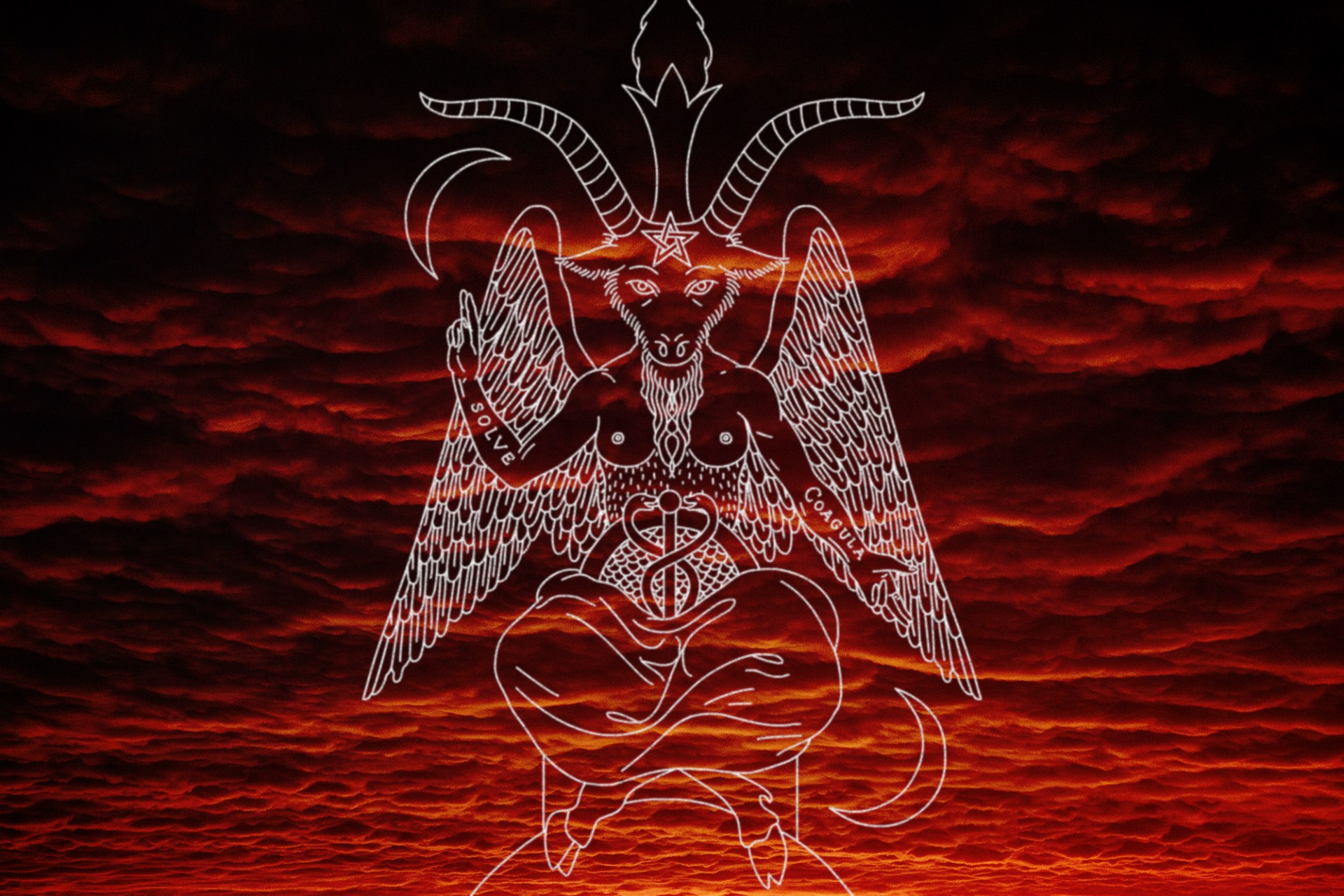
A List Of Satanic Symbols That Are Strangely Inspirational
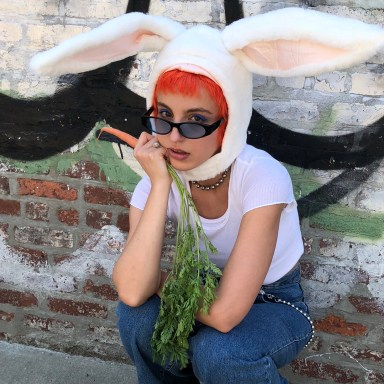
Not all satanic symbols are as evil as they appear and that is because satanism isn’t about sacrificing animals and causing bloodshed. Satanism is more about self-identity. Since you are probably doubtful about a group that has been given such a poor reputation, this is a list of satanic symbols that can inspire you to take control of your own destiny.
The Order Of The Nine Angels
The Order Of The Nine Angels is an occult group that pushes its members to find and surpass their mental, physical, and psychical limits in search of spiritual ascension. They are based in the United Kingdom, but they have affiliated groups around the world.
https://imasdk.googleapis.com/js/core/bridge3.468.0_en.html#goog_2033735376Volume 0% The Leviathan Cross
This is also known as the cross of Satan. The double cross symbolizes protection and balance while the infinity sign represents the eternal universe. The symbol was created to mock the cross and make a point about humans being their own centrum of balance and truth.
The Inverted Pentagram
An inverted pentagram, which is facing the ground instead of the heavens, represents independence, personal power, sexuality, and accomplishment. It is a rejection of Christianity’s dominance over society and a reminder that you are in control over your own fate.https://b8f2de1547770941f3f57c1c2b555f28.safeframe.googlesyndication.com/safeframe/1-0-38/html/container.html
The Original Goat Pentagram
This is the official insignia of the Church of Satan, chosen as a visual representation of their philosophies. It contains an inverted pentagram with a goat’s head in the center, and the Hebrew letters at each point of the pentagram spell out Leviathan, which is a deadly sea monster.
The Grail
The grail holds the elixir of life. It represents the potential we all have within ourselves. It is a reminder that you alone are able to achieve anything that you wish as long as you take it upon yourself to act instead of waiting for a higher power to take control for you.
The Inverted Cross
The cross represents the death of Christ who died upon a cross for our sins, so turning it upside down is meant to disrespect Christ. It represents the choice to rebel instead of submit and obey God.
The Winged Serpent
The winged serpent is a symbol of enlightenment. It represents intense awareness. It is a reminder to stop allowing your circumstances to control what happens to you and to start creating what happens to you.
The Eye Of Providence
Some people believe The Eye of Providence represents God watching over everything and seeing everything. However in satanism the eye, which is wide open and surrounded by light, represents the third eye that allows you to see the truth.
Baphomet
Baphomet represents the equilibrium of the opposite. This symbol contains binary elements representing the sum total of the universe (male and female, good and evil). It also represents a tradition that should result in a perfect social order.
666
This is considered the number of the beast, the number associated with the devil himself. In the bible, the number seven typically represents perfection, which suggests the number six is incomplete or flawed in the eyes of God. That is why satanists have embraced the number.
The Sigil Of Lucifer
This symbol is a visual invocation of the angel Lucifer. Even though some people consider Lucifer a symbol of evil, Satanists consider Lucifer a symbol of freedom and independence.

Thought Catalog
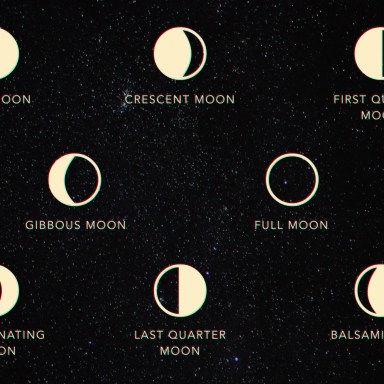
Thought Catalog
Astrological Symbols That Will Help You Learn More About The Universe And About Yourself
Pisces Compatibility: Love, Trust, Friendship, Sex (All 12 Signs)
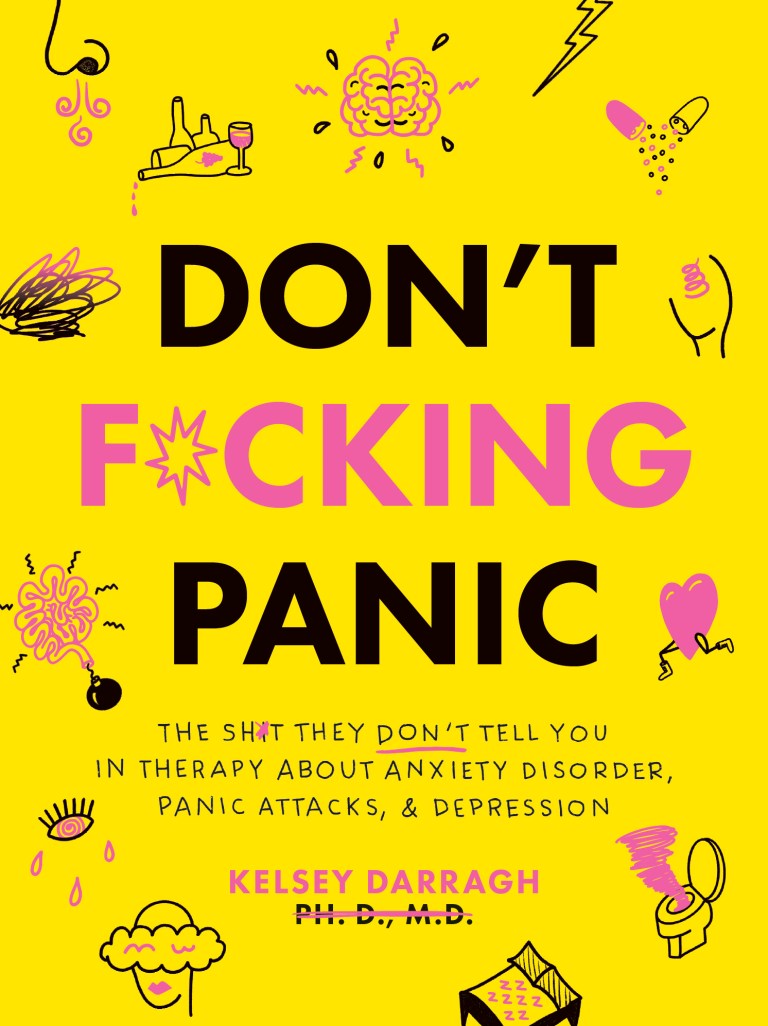
If you’re going to f*cking panic — this book is here to help
There is seemingly no end to how many ways your beautiful brain can mess up your day with uncool thoughts, so comedian and mental health advocate Kelsey Darragh’s new workbook is about to become your new best friend and a permanent resident on your bedside table.Shop Now
MORE FROM THOUGHT CATALOG
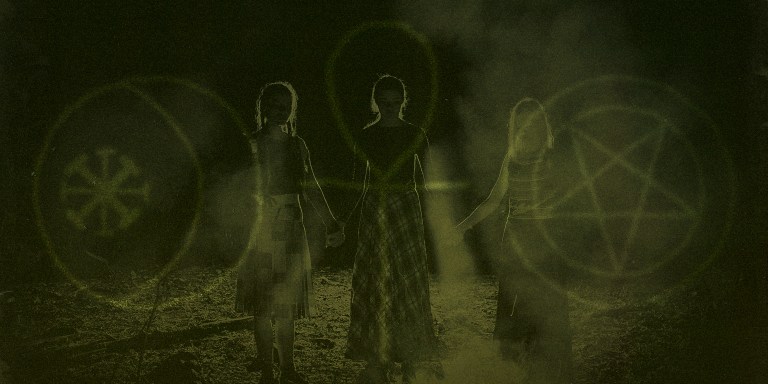
25 Witchcraft Symbols Everyone Should Know About
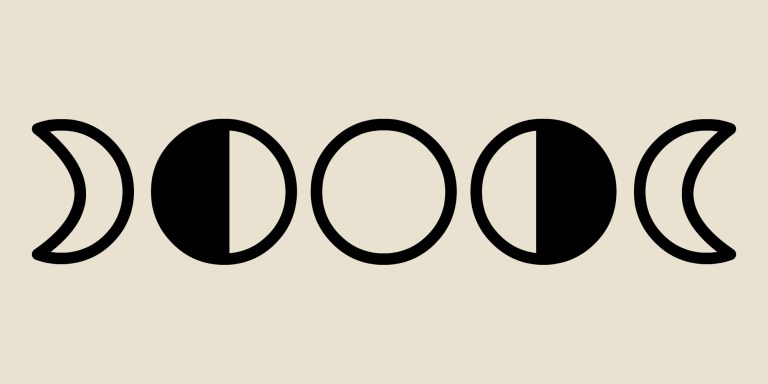
25+ Magic Symbols For Rituals, Spells, And Celebrations
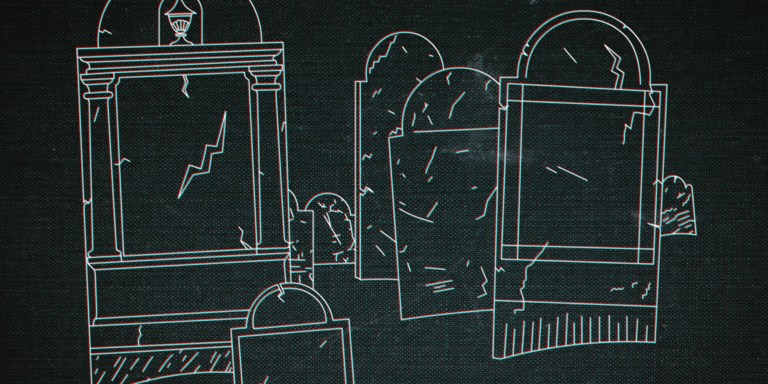
The Darkest, Most Foreboding Symbols Of Death
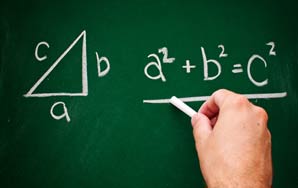
8 Geometric Shapes You Didn’t Realize Are Problematic
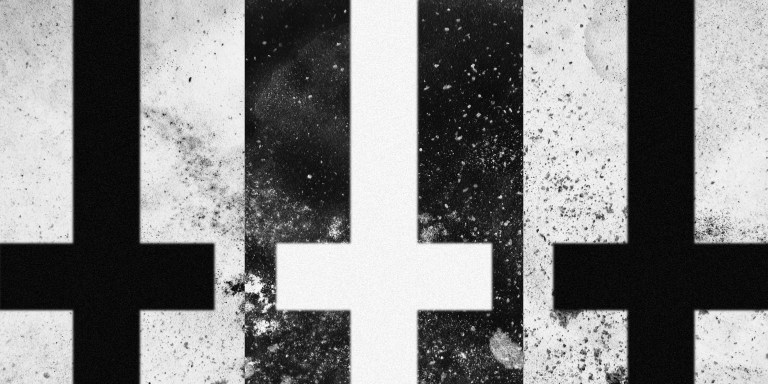
Here’s What An Upside Down Cross Really Means
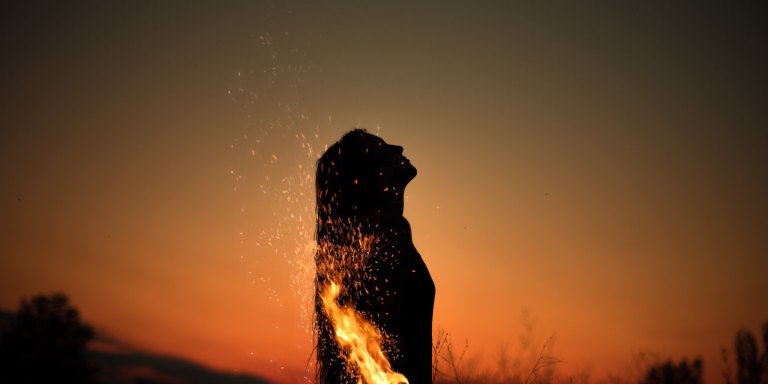
5 Magick Symbols Every Witch Should Use In Their Practice
A website by Thought.is
© 2021 The Thought & Expression Company, LLC.
All rights reserved. Powered by WordPress VIP.
**********

Symbols Rule the World
Published at: November 16, 2017 / Category: Media & Information, Science & Technology, Secret Societies, Telecommunications / Comments: No Comments
If you have ever started your own business or created a website for yourself then you already know the importance of a logo or symbols. It’s easier to remember the logo of a company than it’s the actual name. The subconscious mind is much more powerful than we realize.
There are symbols everywhere. We see them so often but yet most of us don’t have an understanding as to what they really mean. Secret Societies use symbolism to communicate with others and to hide the true meaning behind them. In today’s world, those symbols that most don’t understand and are used by secret societies are considered “evil” or “satanic.”
Just because a group of people are using the symbol and have a sinister agenda does not mean they own the origin of that symbol and that everyone using it is connected and “evil.” That’s just religious fear mongering to keep us from the truth. Once you understand the symbolism in addition to what words mean in other languages (spells) then the whole house of cards collapses which would expand your consciousness.
Take the pentagram for example. In some modern day religions it is viewed as some sort of evil symbol and associated with witchcraft. When in reality it has a very profound and ancient meaning. If you draw a pentagram, the lines automatically divide themselves into segments according to the Divine Proportion. The ratios of the line segments in a pentacle all equal PHI making this symbol the ultimate expression of the Divine Proportion.
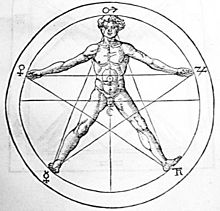
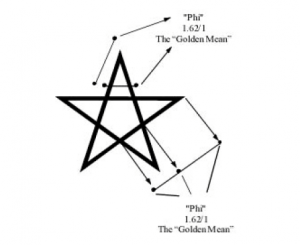
For this reason the five-pointed star has always been the symbol of beauty and perfection associated with the Goddess and the sacred feminine. The Sacred Geometry of nature, again is all about the Goddess, Mother nature, who gives us life. Associated with the feminine aspect of consciousness. The serpent is another symbol for that too.
Be wise as serpents—and harmless as doves.” Matthew 10:16 KJV
The serpent energy is definitely one of the most primeval archetypes and in all ancient cultures was intimately connected with the mysteries of the divine female – Crompton
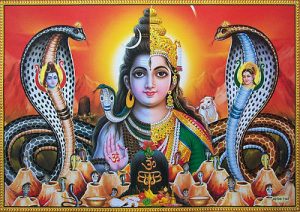
The “G” in the Freemasons logo stands for gnosis (knowledge) as in knowledge they are hiding from us within their secret society.
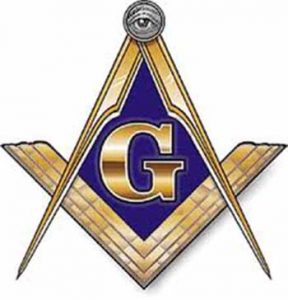
“Symbolism is the language of the Mysteries … By symbols men have ever sought to communicate to each other those thoughts which transcend the limitations of language. Rejecting man-conceived dialects as inadequate and unworthy to perpetuate divine ideas, the Mysteries thus chose symbolism as a far more ingenious and ideal method of preserving their transcendental knowledge. In a single figure a symbol may both reveal and conceal, for to the wise the subject of the symbol is obvious, while to the ignorant the figure remains inscrutable. Hence, he who seeks to unveil the secret doctrine of antiquity must search for that doctrine not upon the open pages of books which might fall into the hands of the unworthy but in the place where it was originally concealed.”
—Manly P. Hall, “The Secret Teachings of All Ages,” (page 20).
“Signs and symbols rule the world, not words nor laws.”- Confucius
The network of secret societies controlled by the Illuminati always use symbols of the “all seeing eye.” The origin and meaning behind that symbol doesn’t belong to any secret society. It’s the eye of Horus, which is your pineal gland, opening your third eye, your spiritual eye.
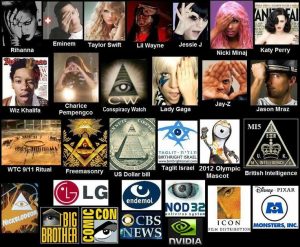
“The light of the body is the eye: if therefore thine eye be single, thy whole body shall be full of light.” – Matthew 6:22 KJV
The geometric shapes of vibration are what creates our physical reality. Which most of these symbols all tie into.
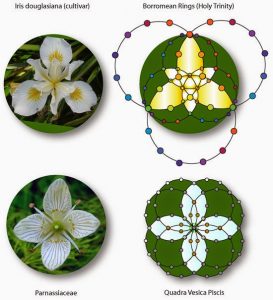
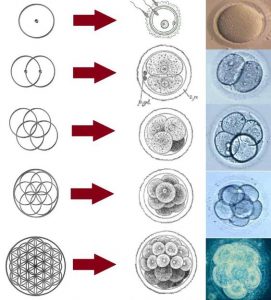
This is a great video about Saturn symbolism. https://www.youtube.com/embed/NwmvM-sUep4?feature=oembed

Symbols Rule the World
Published at: November 16, 2017 / Category: Media & Information, Science & Technology, Secret Societies, Telecommunications / Comments: No Comments
If you have ever started your own business or created a website for yourself then you already know the importance of a logo or symbols. It’s easier to remember the logo of a company than it’s the actual name. The subconscious mind is much more powerful than we realize.
There are symbols everywhere. We see them so often but yet most of us don’t have an understanding as to what they really mean. Secret Societies use symbolism to communicate with others and to hide the true meaning behind them. In today’s world, those symbols that most don’t understand and are used by secret societies are considered “evil” or “satanic.”
Just because a group of people are using the symbol and have a sinister agenda does not mean they own the origin of that symbol and that everyone using it is connected and “evil.” That’s just religious fear mongering to keep us from the truth. Once you understand the symbolism in addition to what words mean in other languages (spells) then the whole house of cards collapses which would expand your consciousness.
Take the pentagram for example. In some modern day religions it is viewed as some sort of evil symbol and associated with witchcraft. When in reality it has a very profound and ancient meaning. If you draw a pentagram, the lines automatically divide themselves into segments according to the Divine Proportion. The ratios of the line segments in a pentacle all equal PHI making this symbol the ultimate expression of the Divine Proportion.


For this reason the five-pointed star has always been the symbol of beauty and perfection associated with the Goddess and the sacred feminine. The Sacred Geometry of nature, again is all about the Goddess, Mother nature, who gives us life. Associated with the feminine aspect of consciousness. The serpent is another symbol for that too.
Be wise as serpents—and harmless as doves.” Matthew 10:16 KJV
The serpent energy is definitely one of the most primeval archetypes and in all ancient cultures was intimately connected with the mysteries of the divine female – Crompton

The “G” in the Freemasons logo stands for gnosis (knowledge) as in knowledge they are hiding from us within their secret society.

“Symbolism is the language of the Mysteries … By symbols men have ever sought to communicate to each other those thoughts which transcend the limitations of language. Rejecting man-conceived dialects as inadequate and unworthy to perpetuate divine ideas, the Mysteries thus chose symbolism as a far more ingenious and ideal method of preserving their transcendental knowledge. In a single figure a symbol may both reveal and conceal, for to the wise the subject of the symbol is obvious, while to the ignorant the figure remains inscrutable. Hence, he who seeks to unveil the secret doctrine of antiquity must search for that doctrine not upon the open pages of books which might fall into the hands of the unworthy but in the place where it was originally concealed.”
—Manly P. Hall, “The Secret Teachings of All Ages,” (page 20).
“Signs and symbols rule the world, not words nor laws.”- Confucius
The network of secret societies controlled by the Illuminati always use symbols of the “all seeing eye.” The origin and meaning behind that symbol doesn’t belong to any secret society. It’s the eye of Horus, which is your pineal gland, opening your third eye, your spiritual eye.

“The light of the body is the eye: if therefore thine eye be single, thy whole body shall be full of light.” – Matthew 6:22 KJV
The geometric shapes of vibration are what creates our physical reality. Which most of these symbols all tie into.


This is a great video about Saturn symbolism. https://www.youtube.com/embed/NwmvM-sUep4?feature=oembed
This article can also be found at The Hidden World of Symbols | The UFO Spotlight On…

Steve Erdmann – Independent Investigative Journalist

